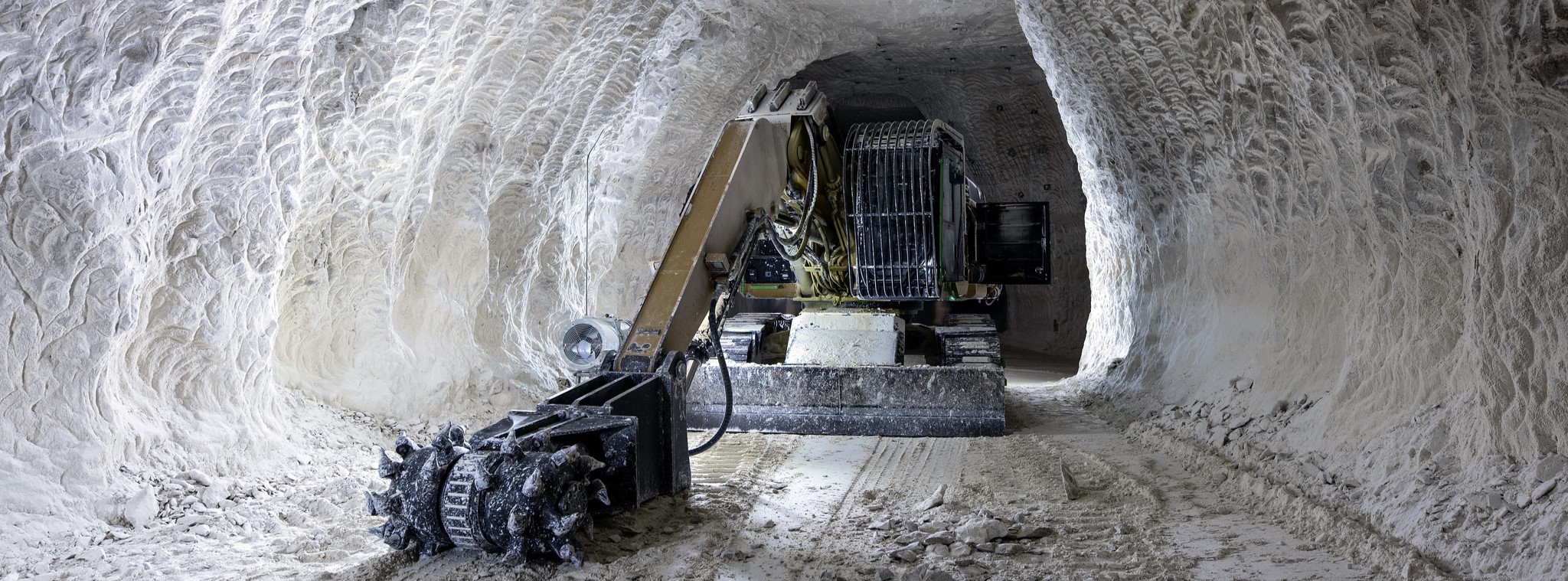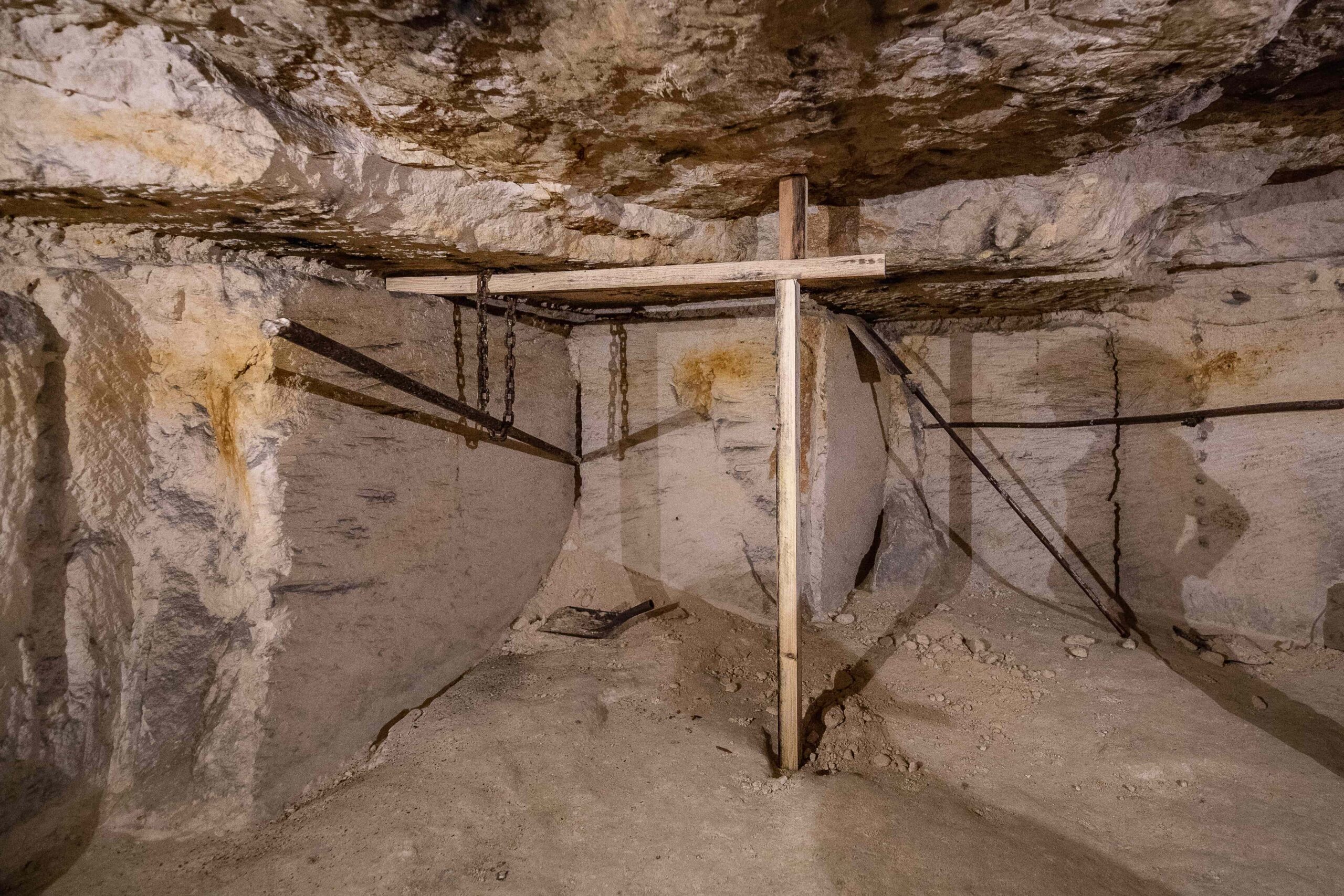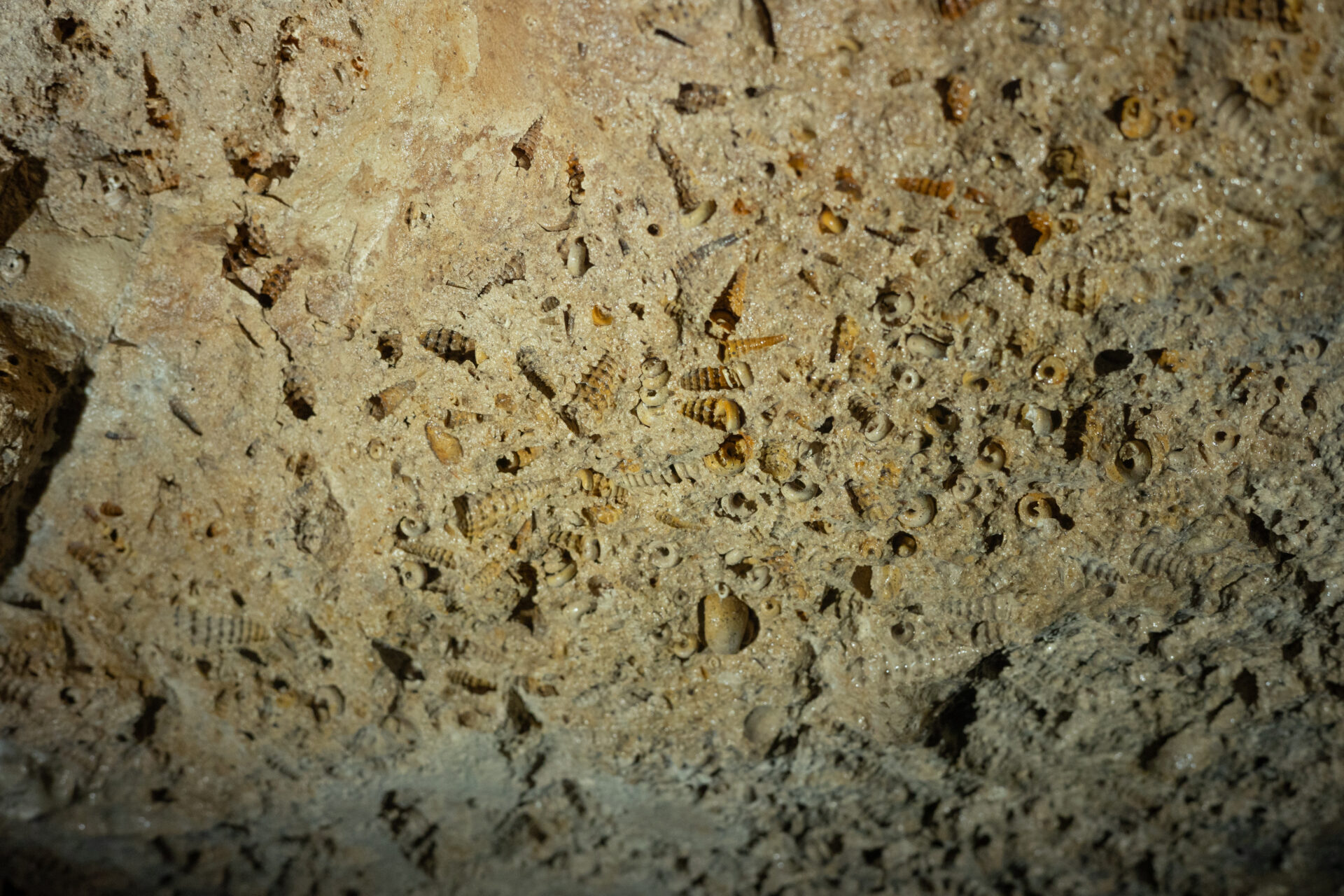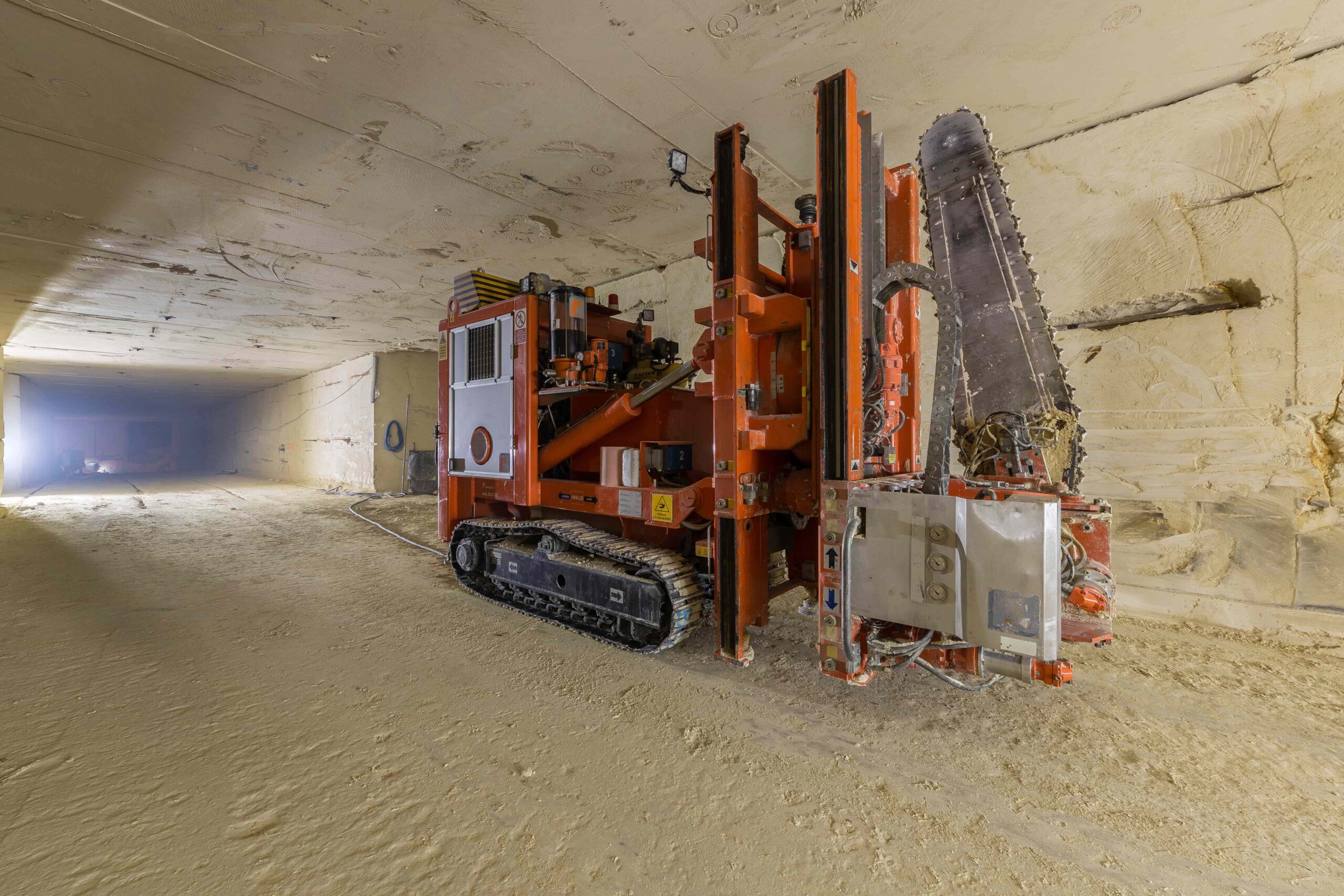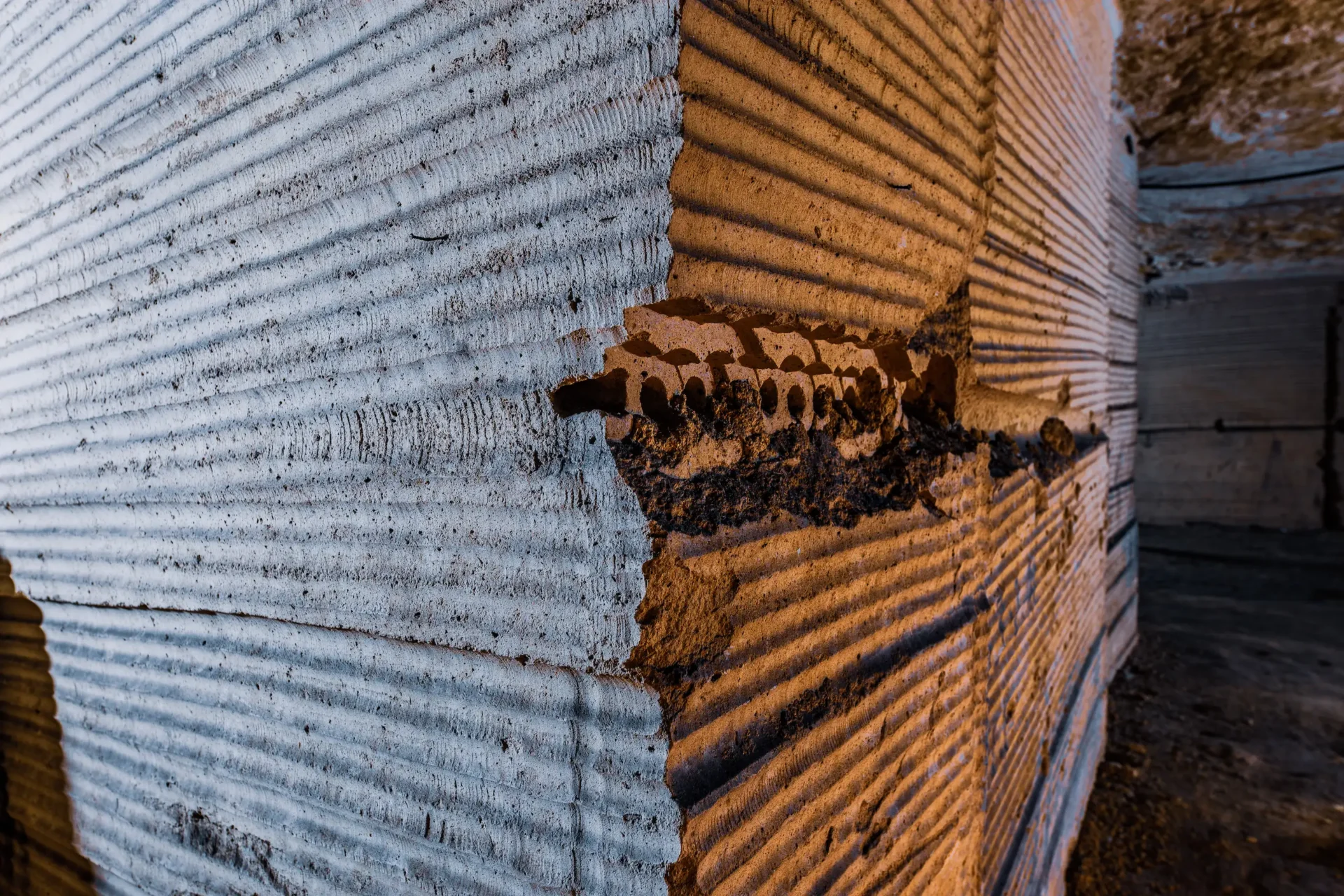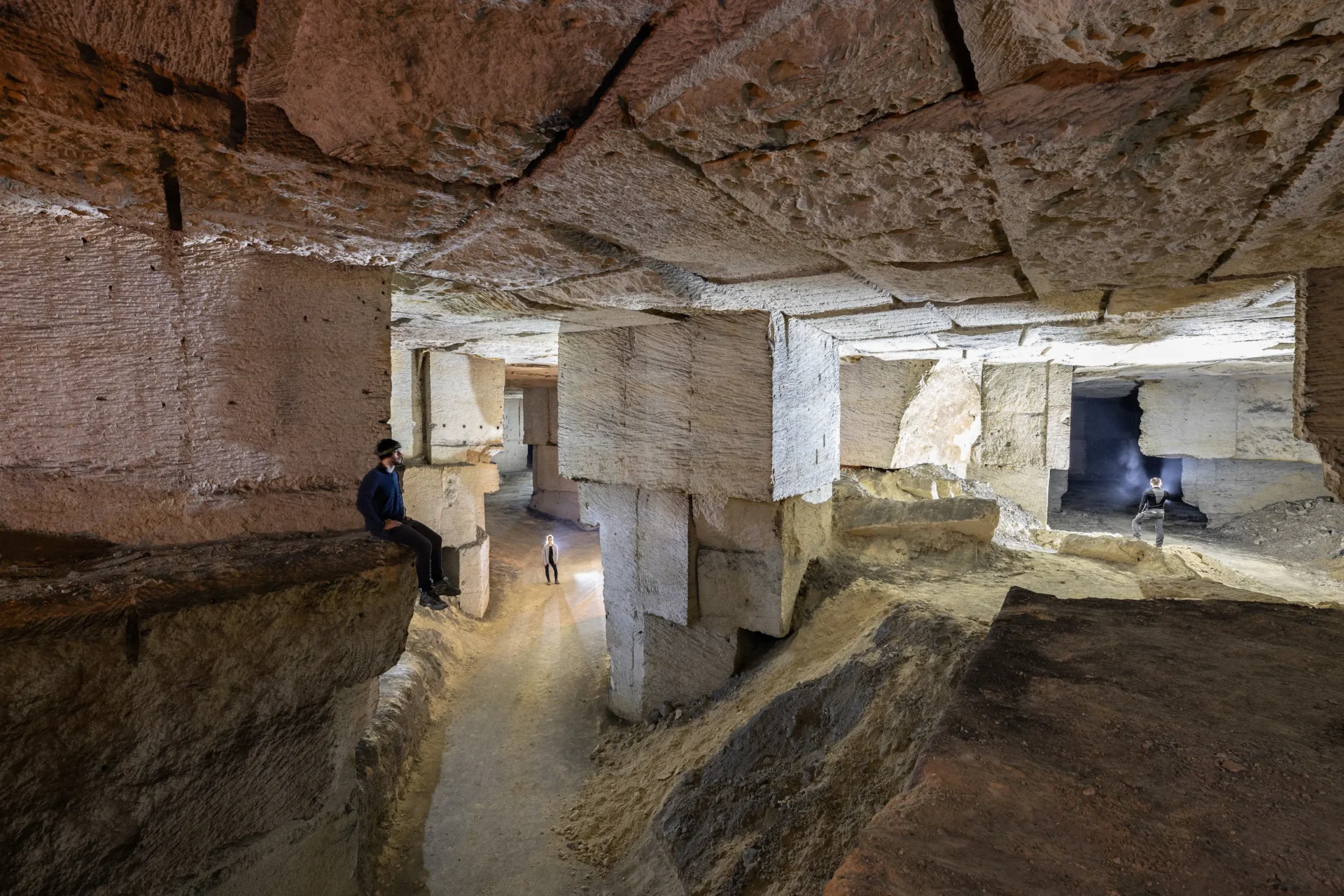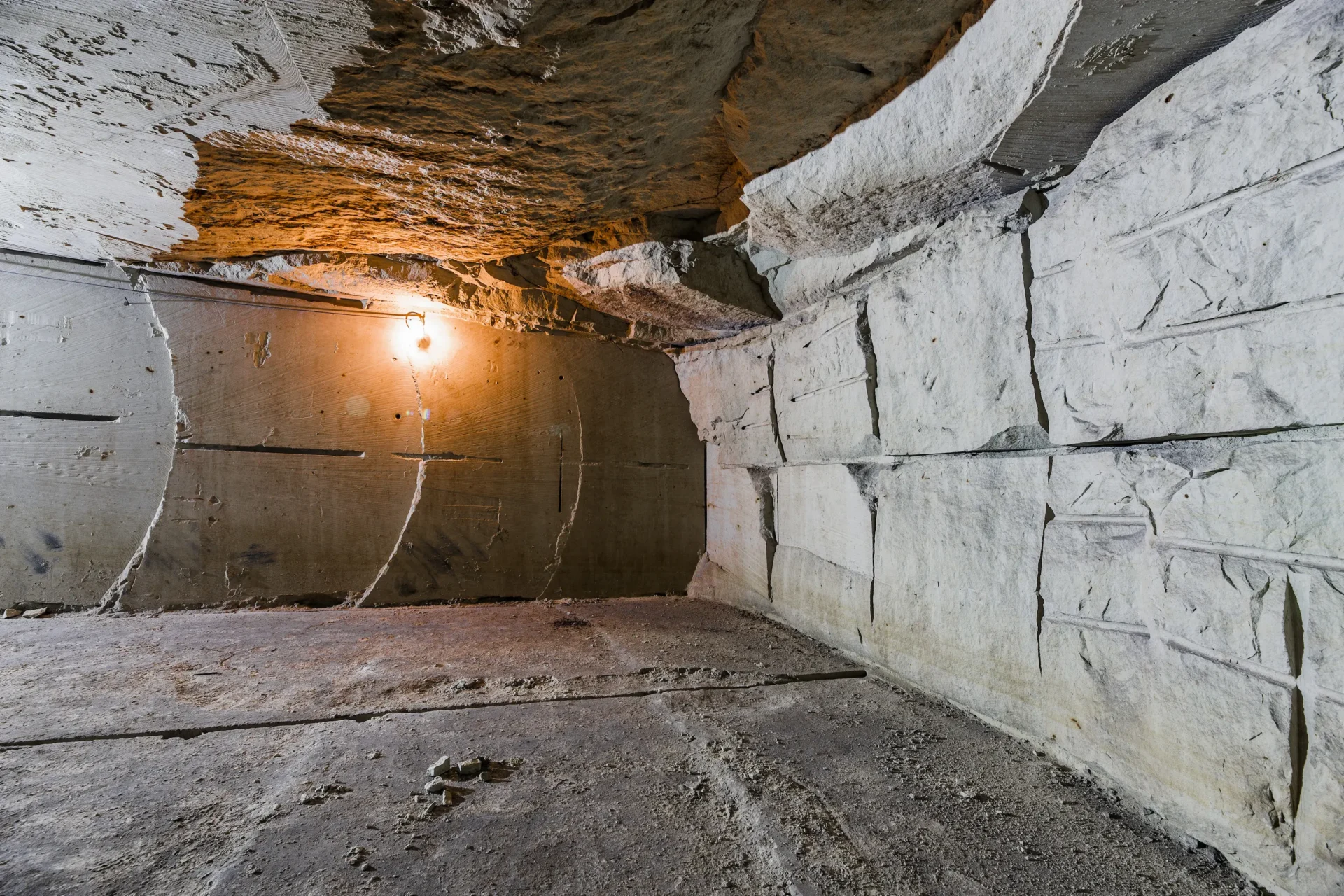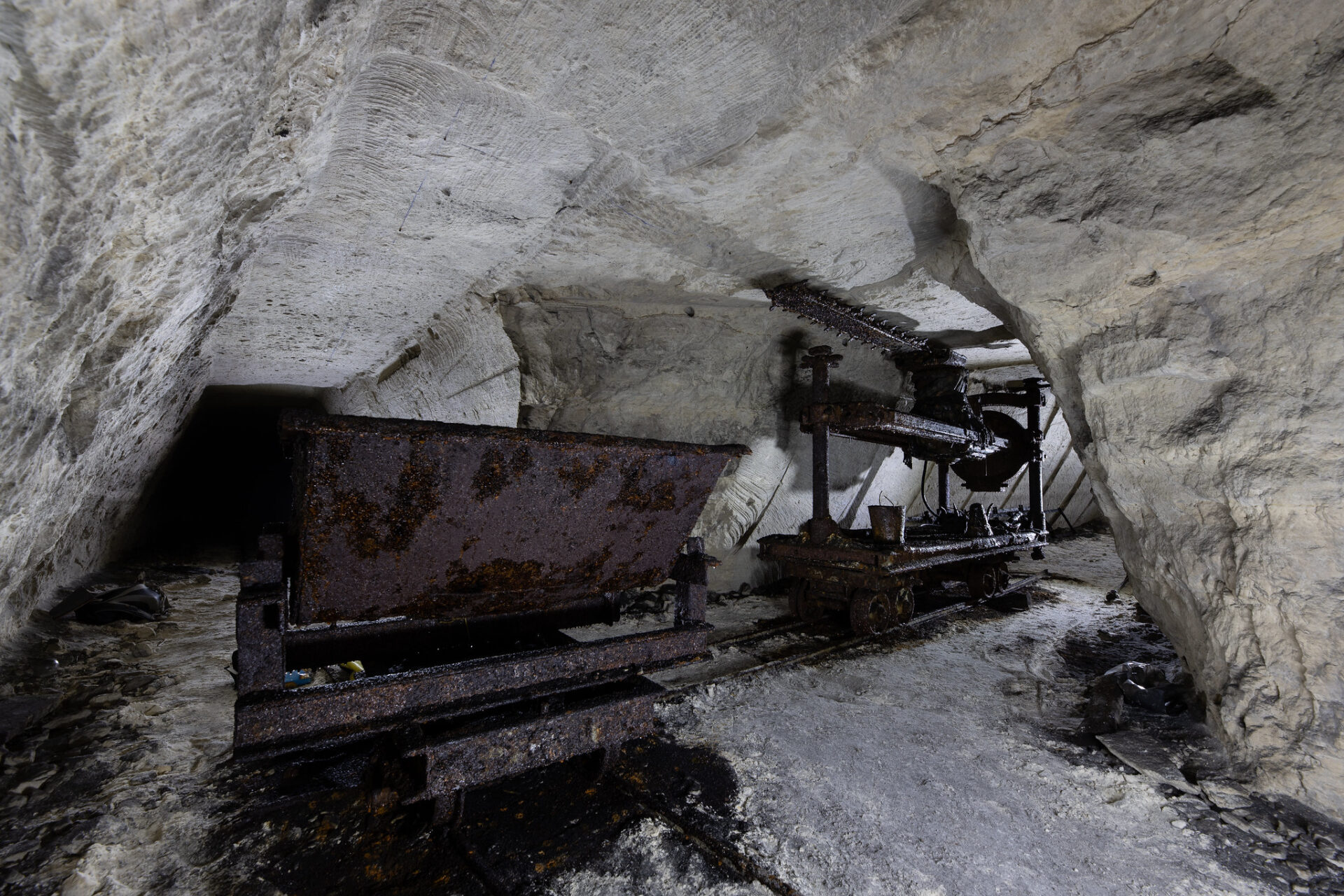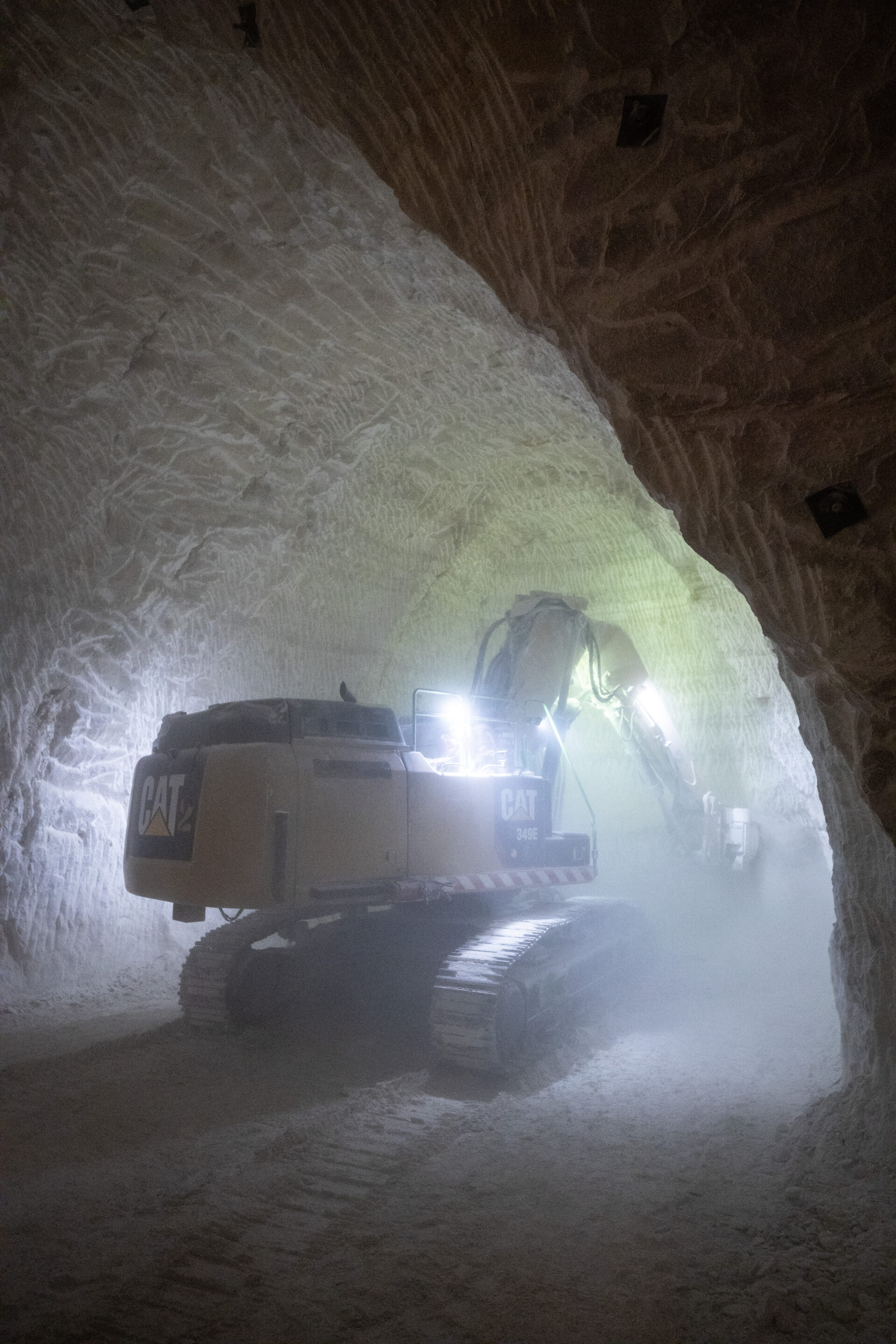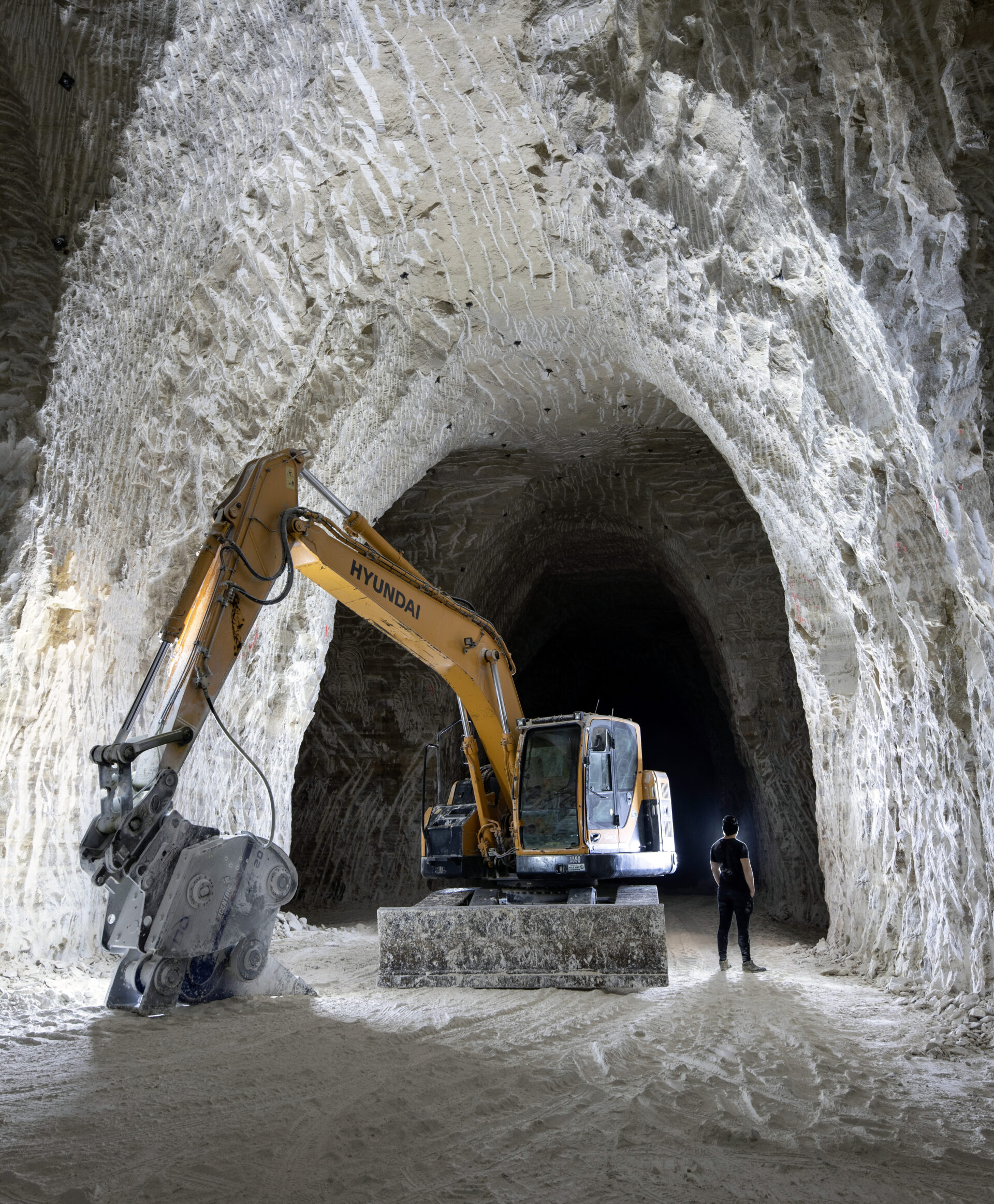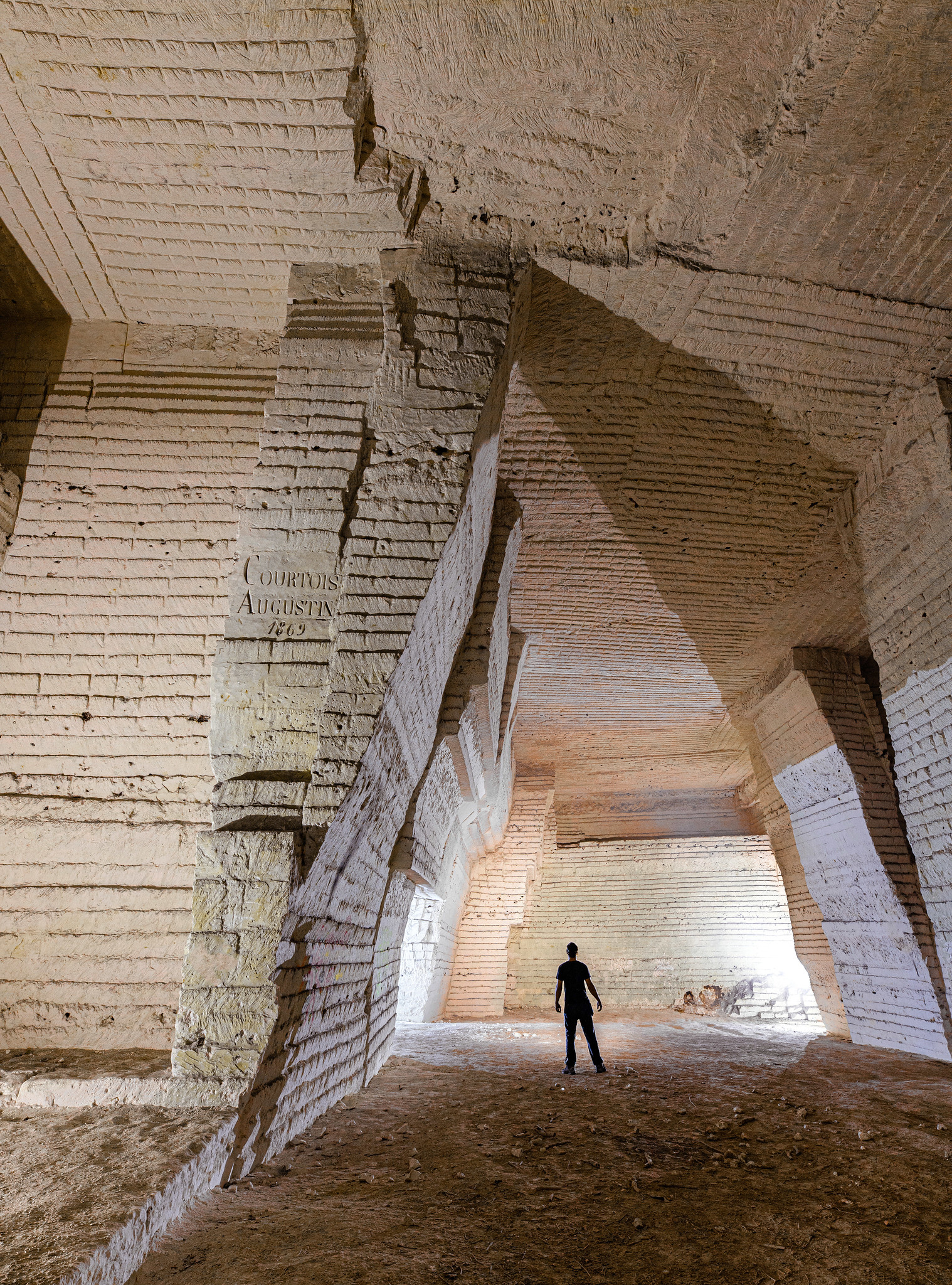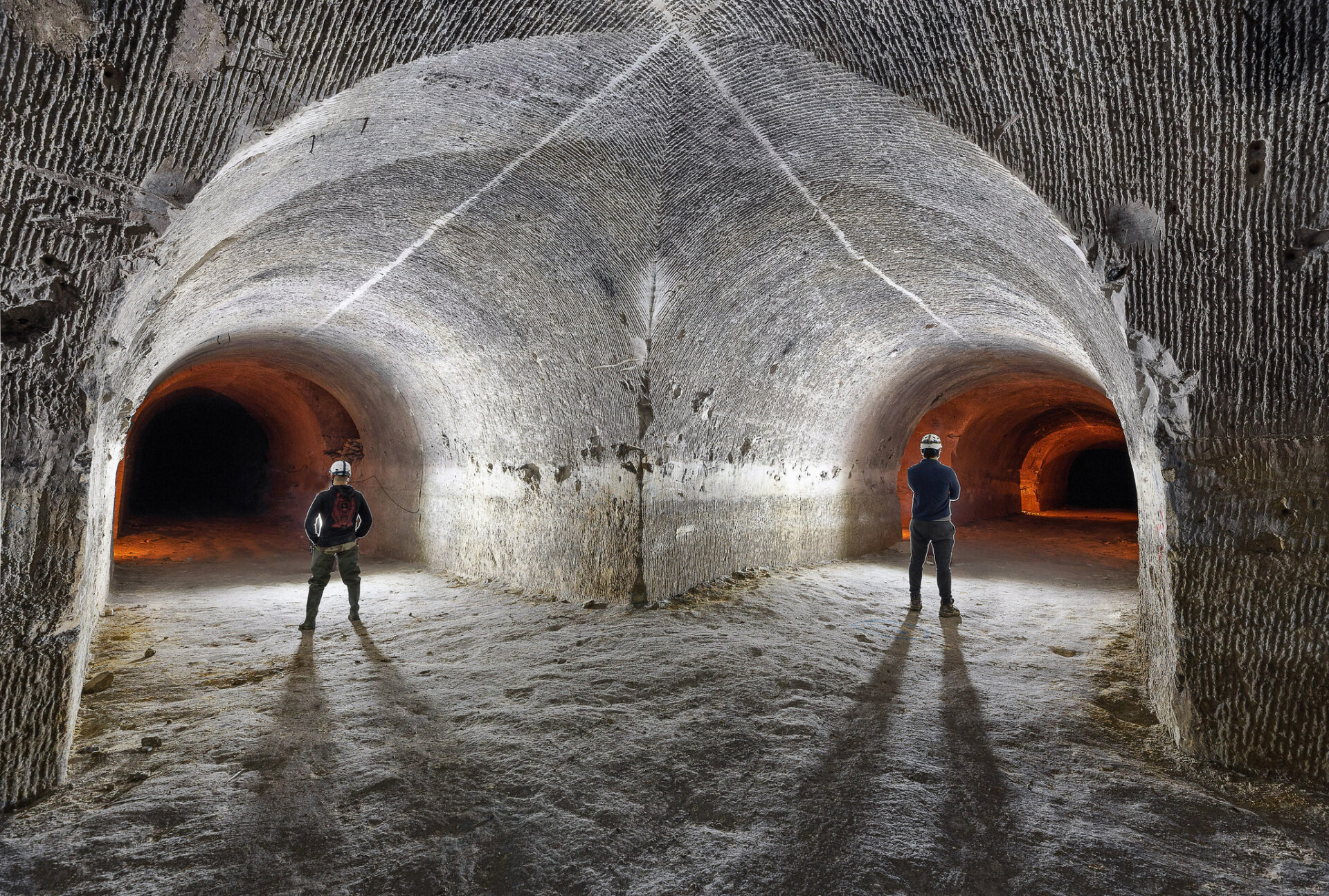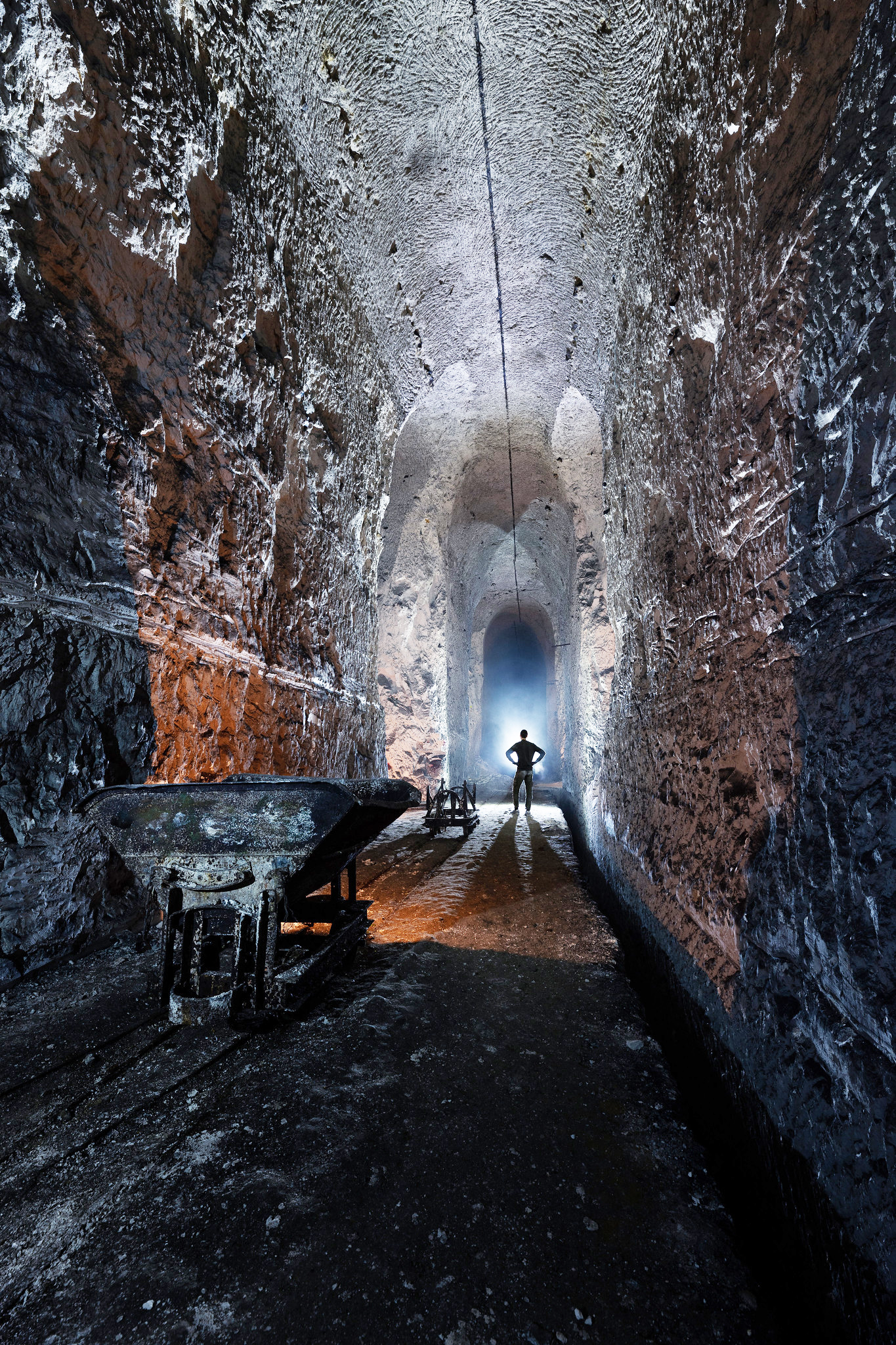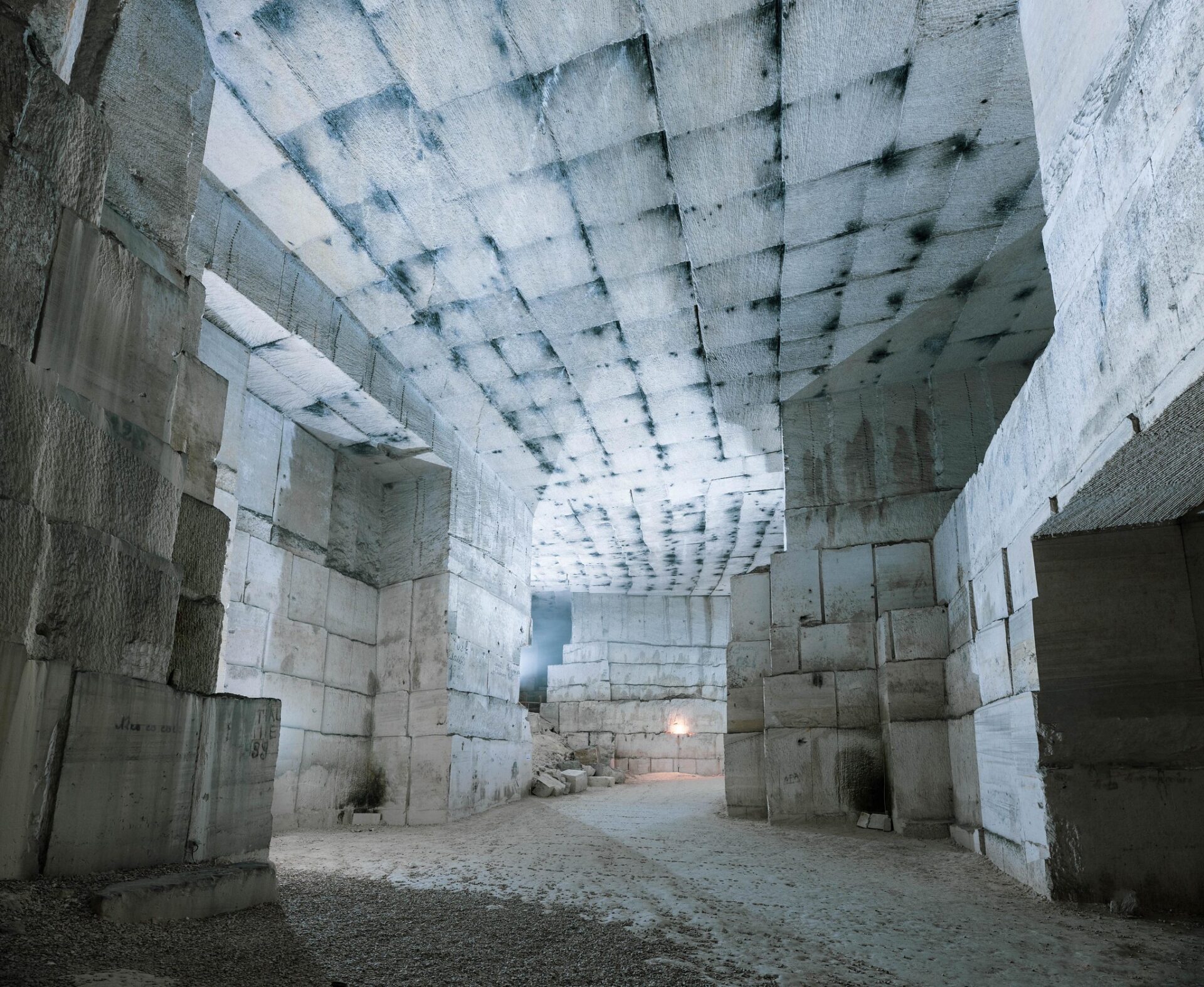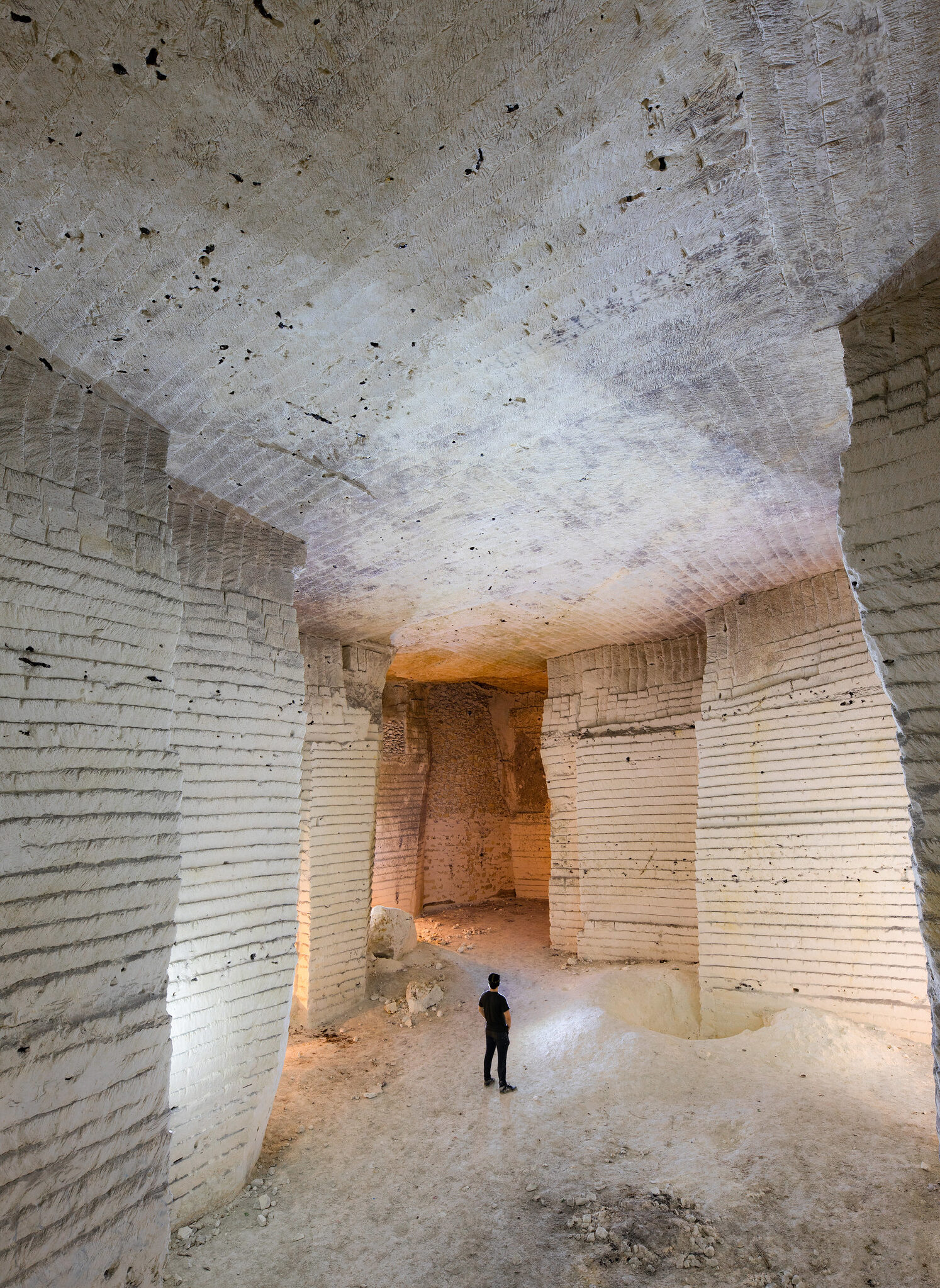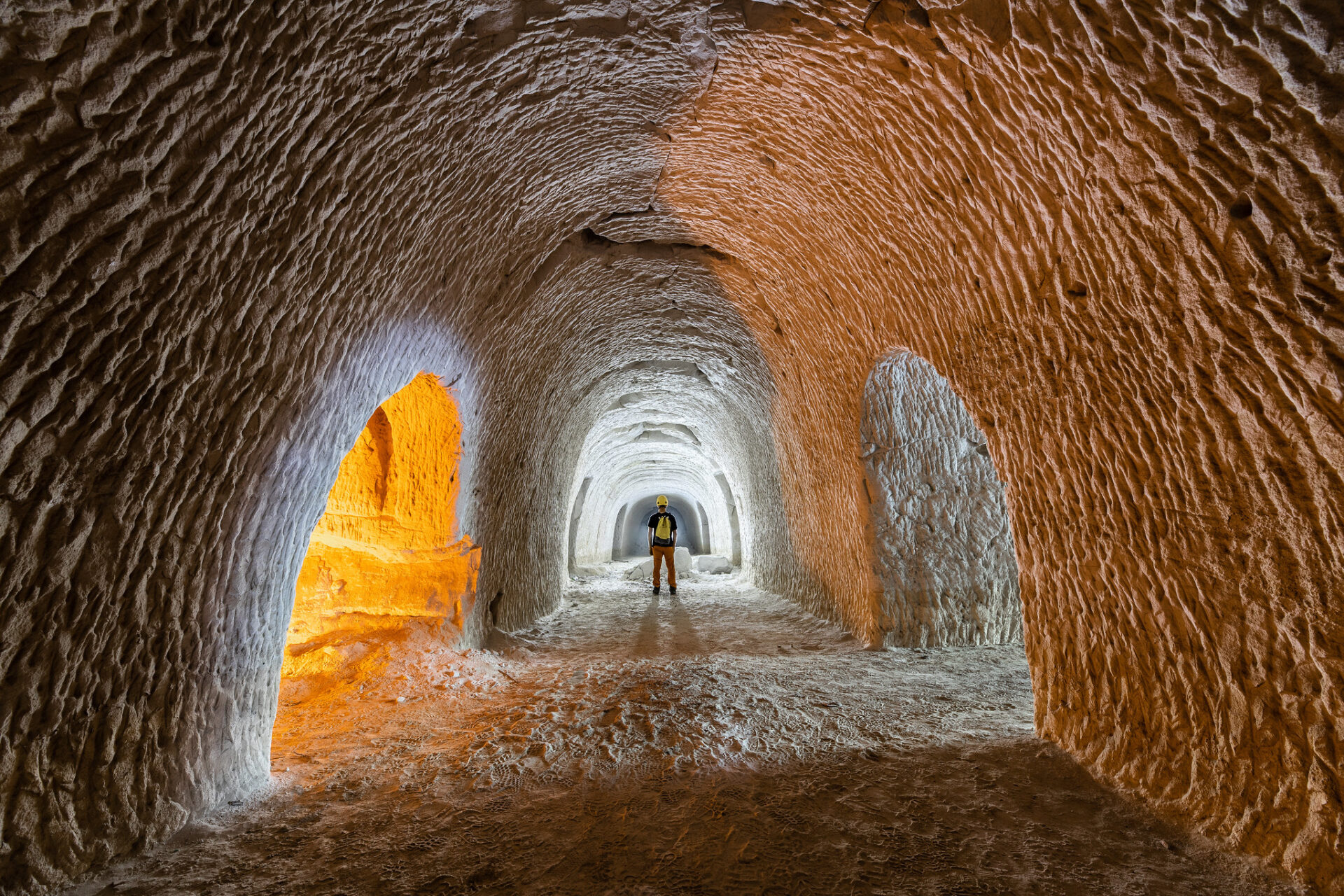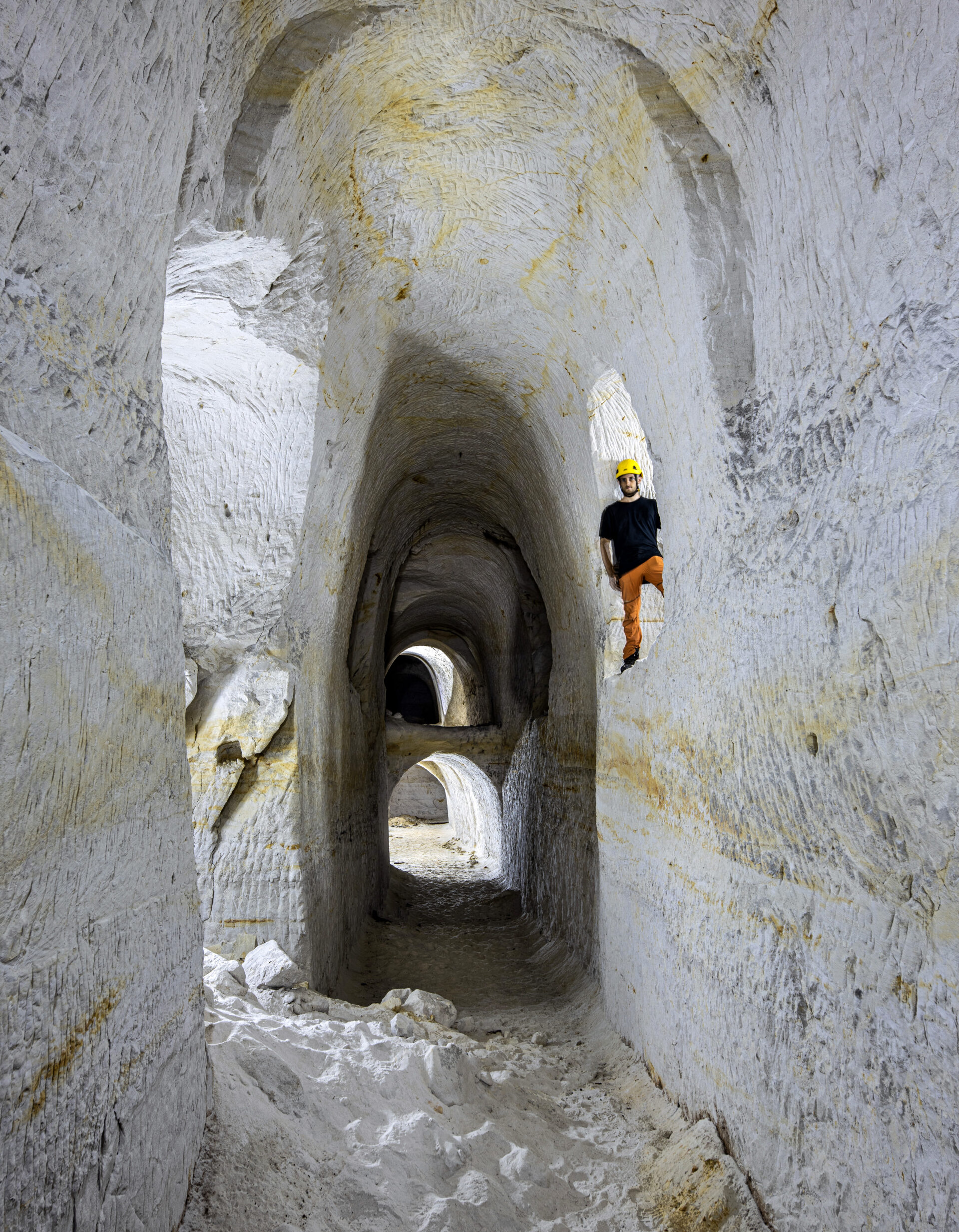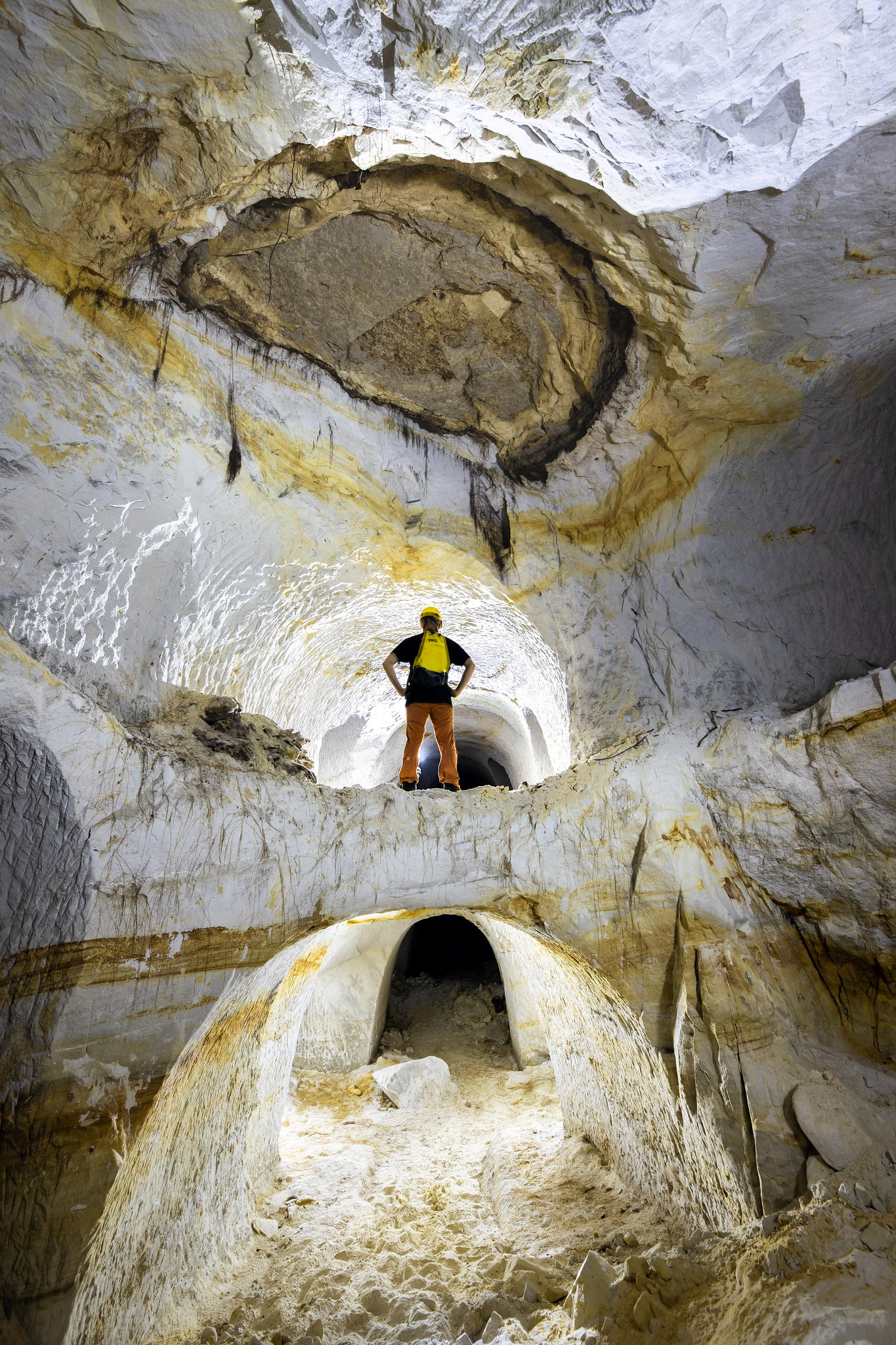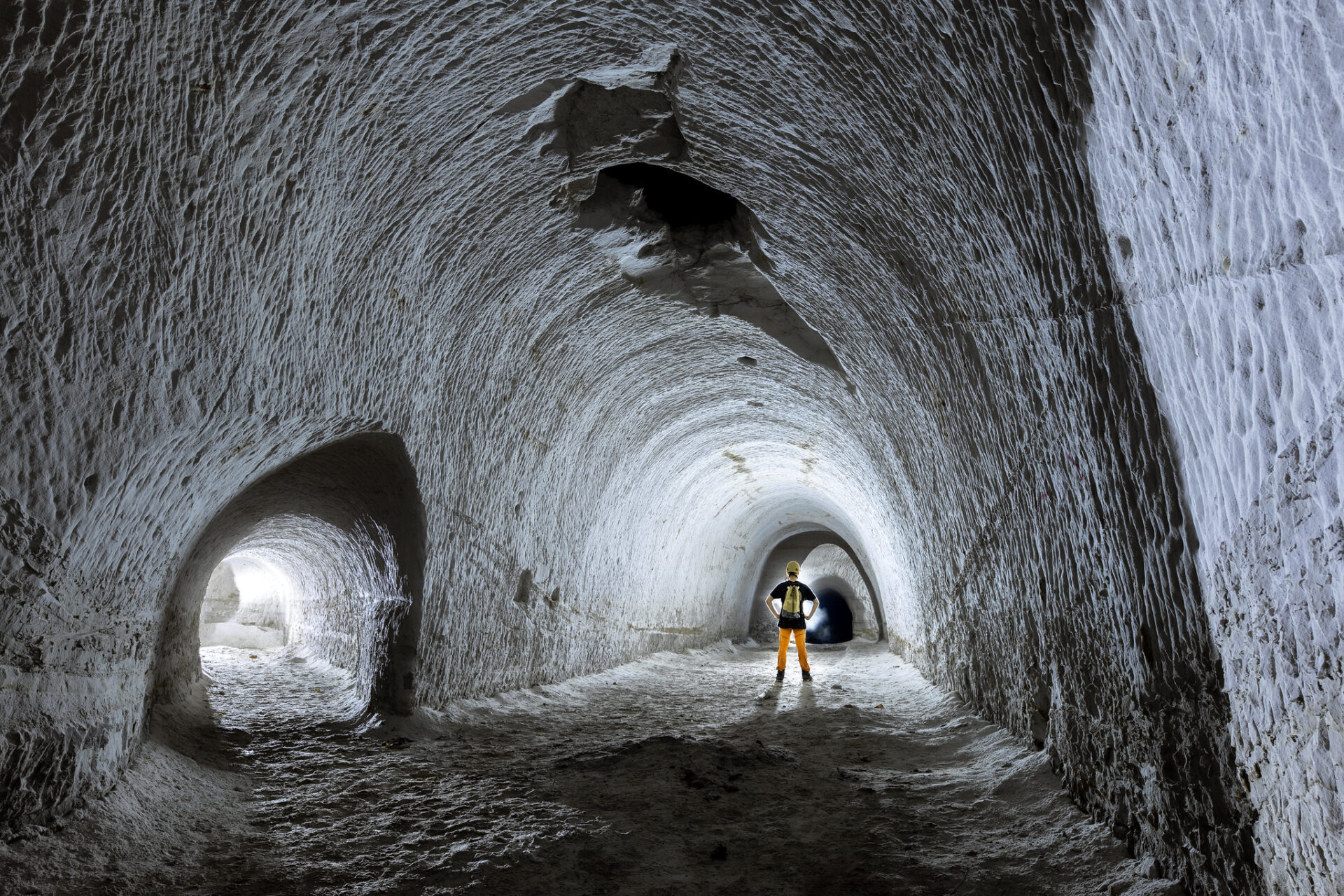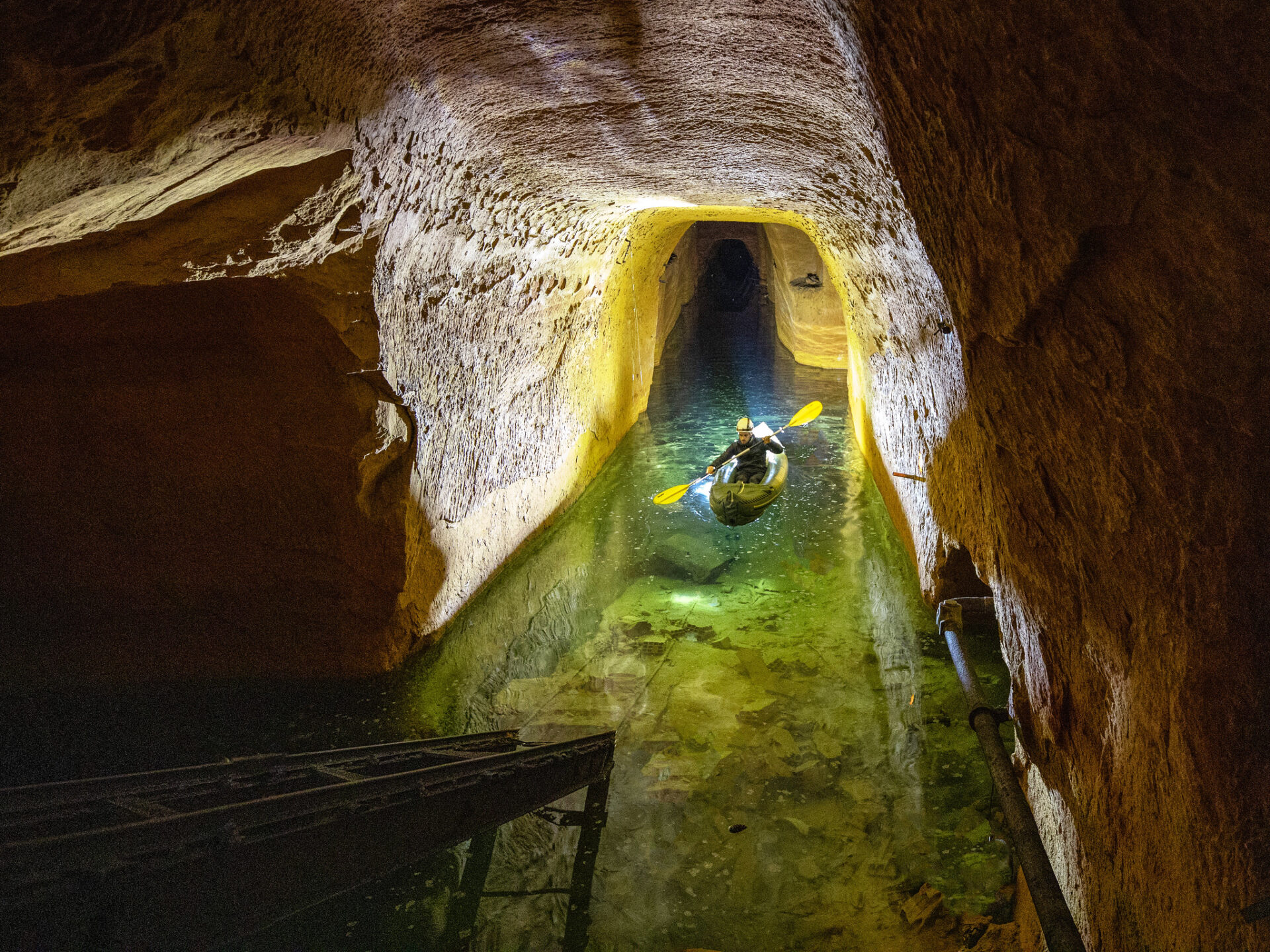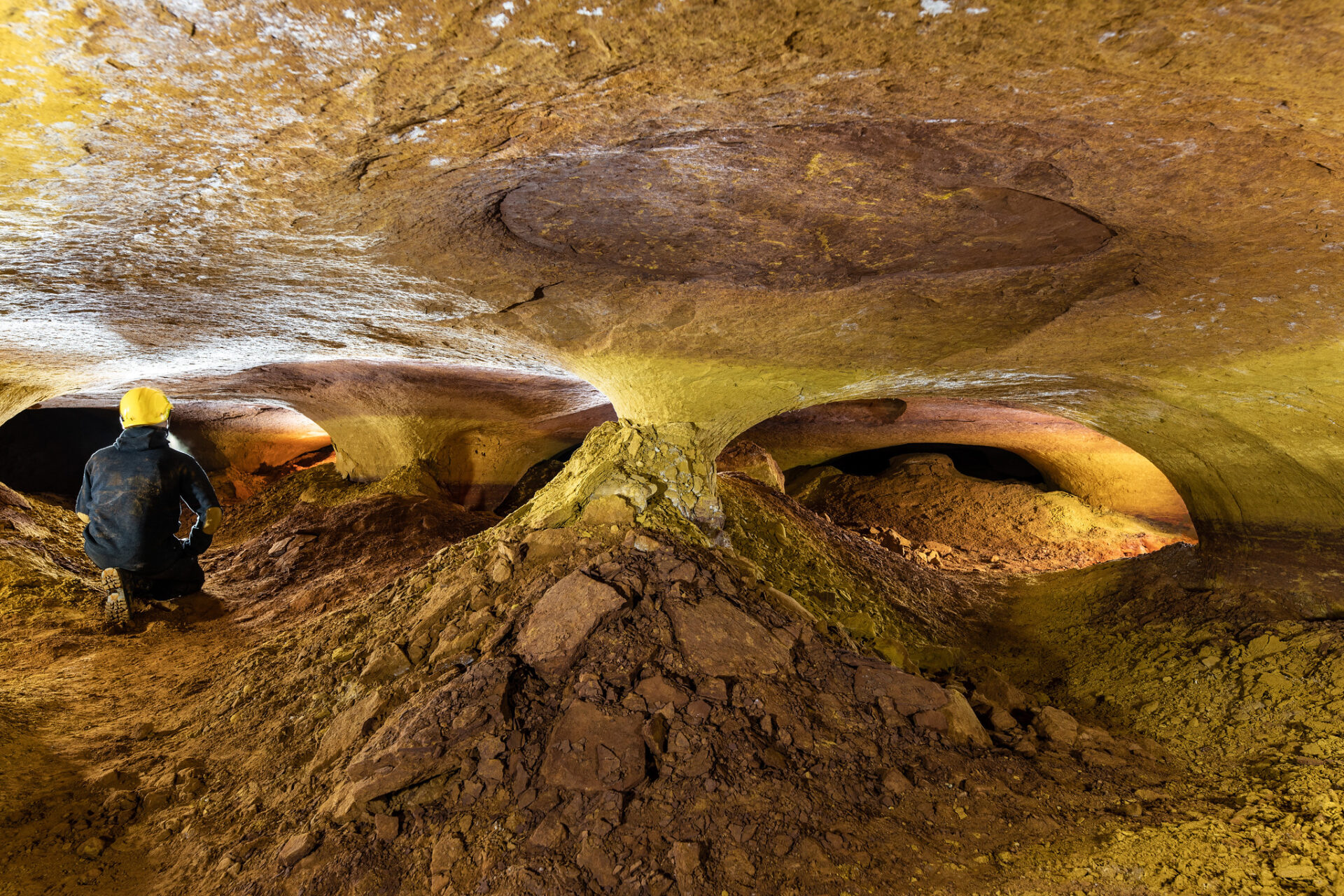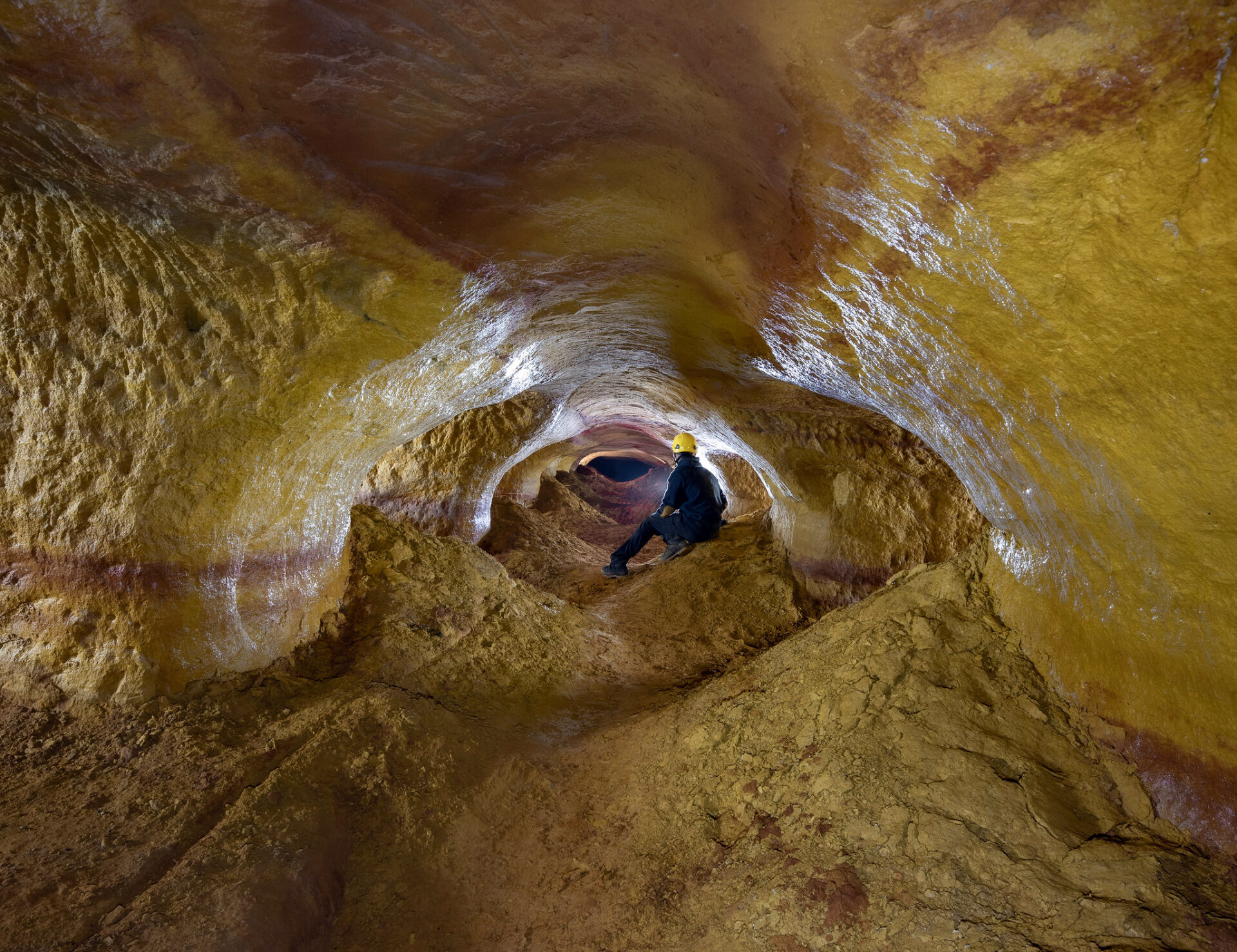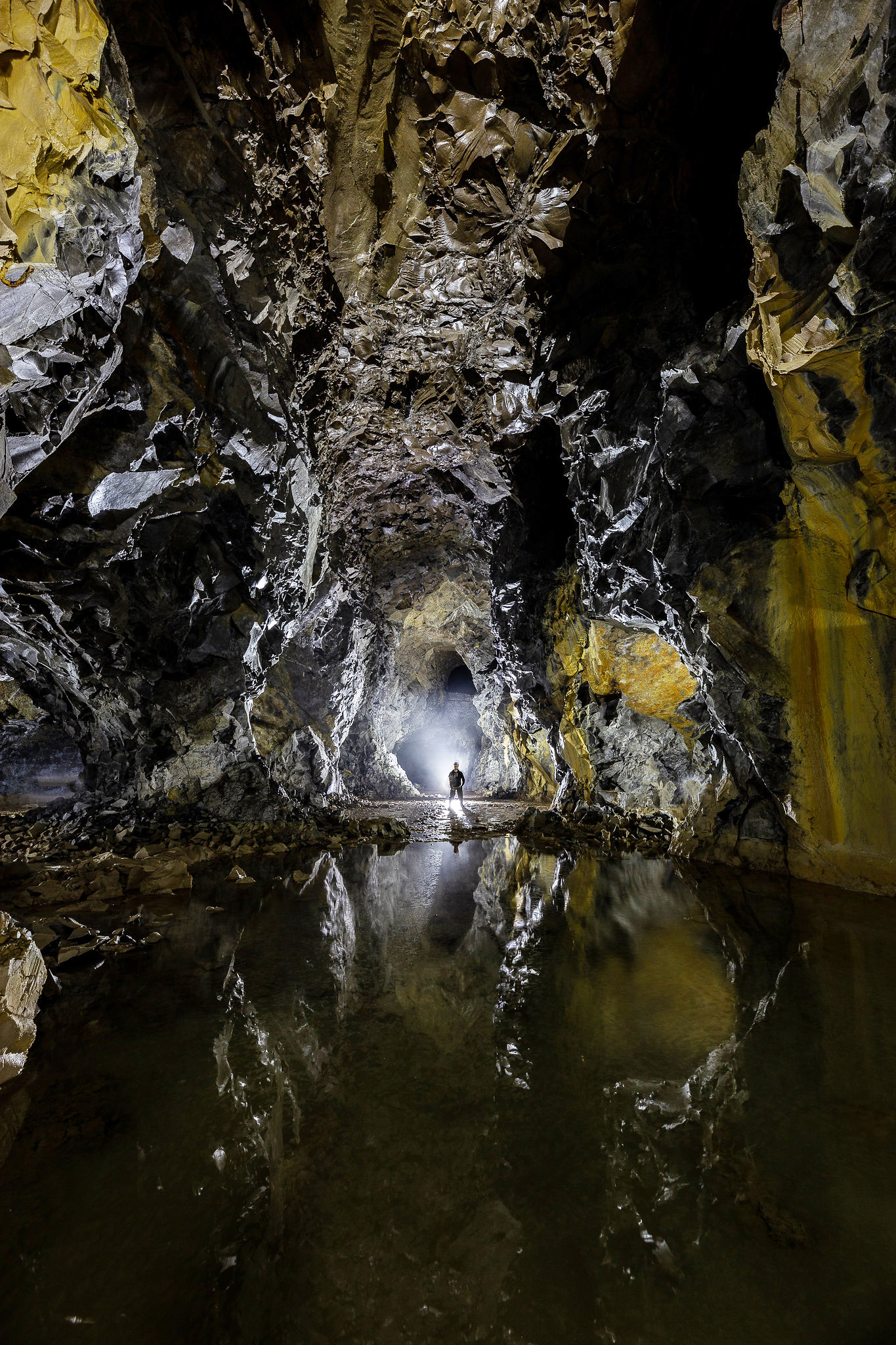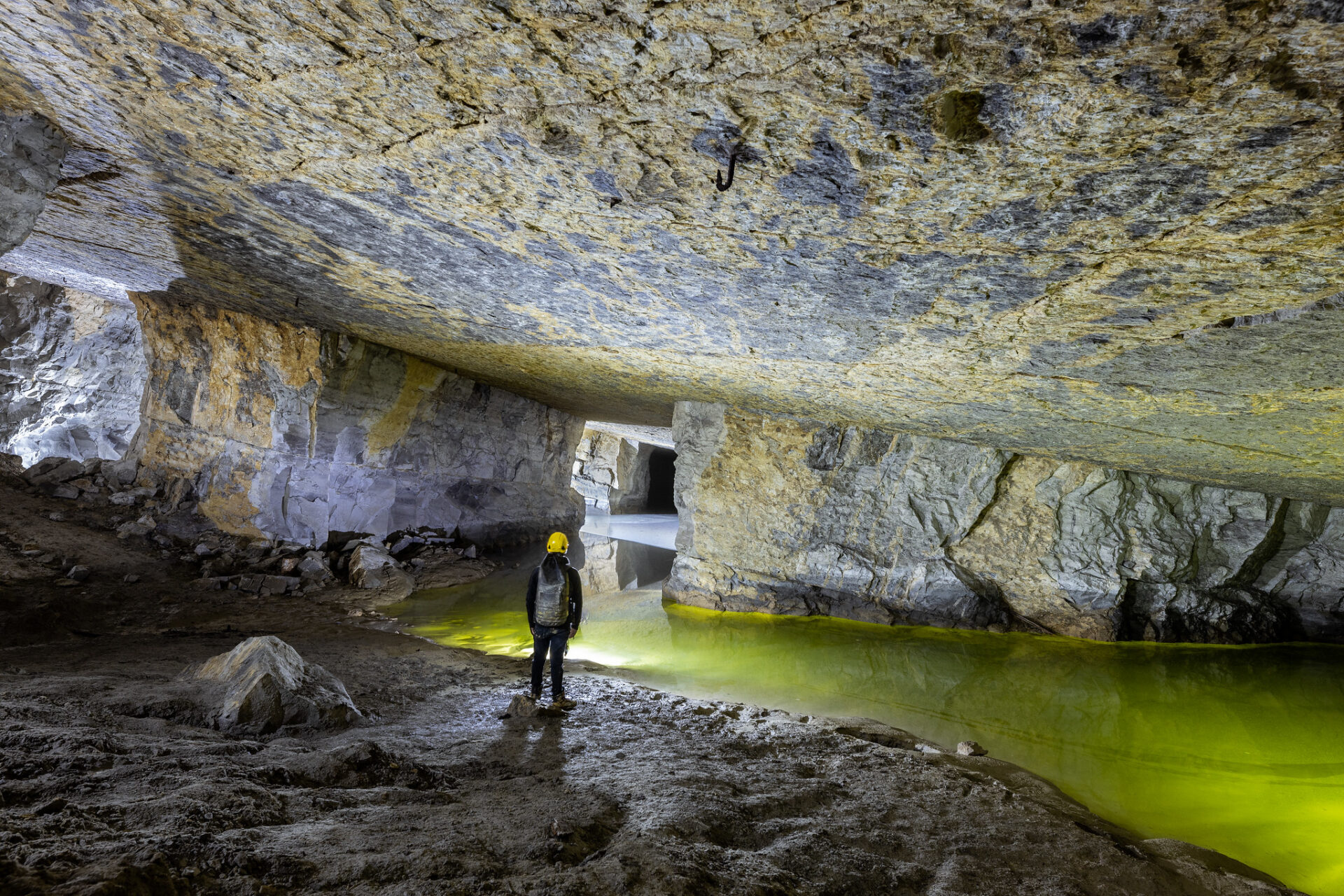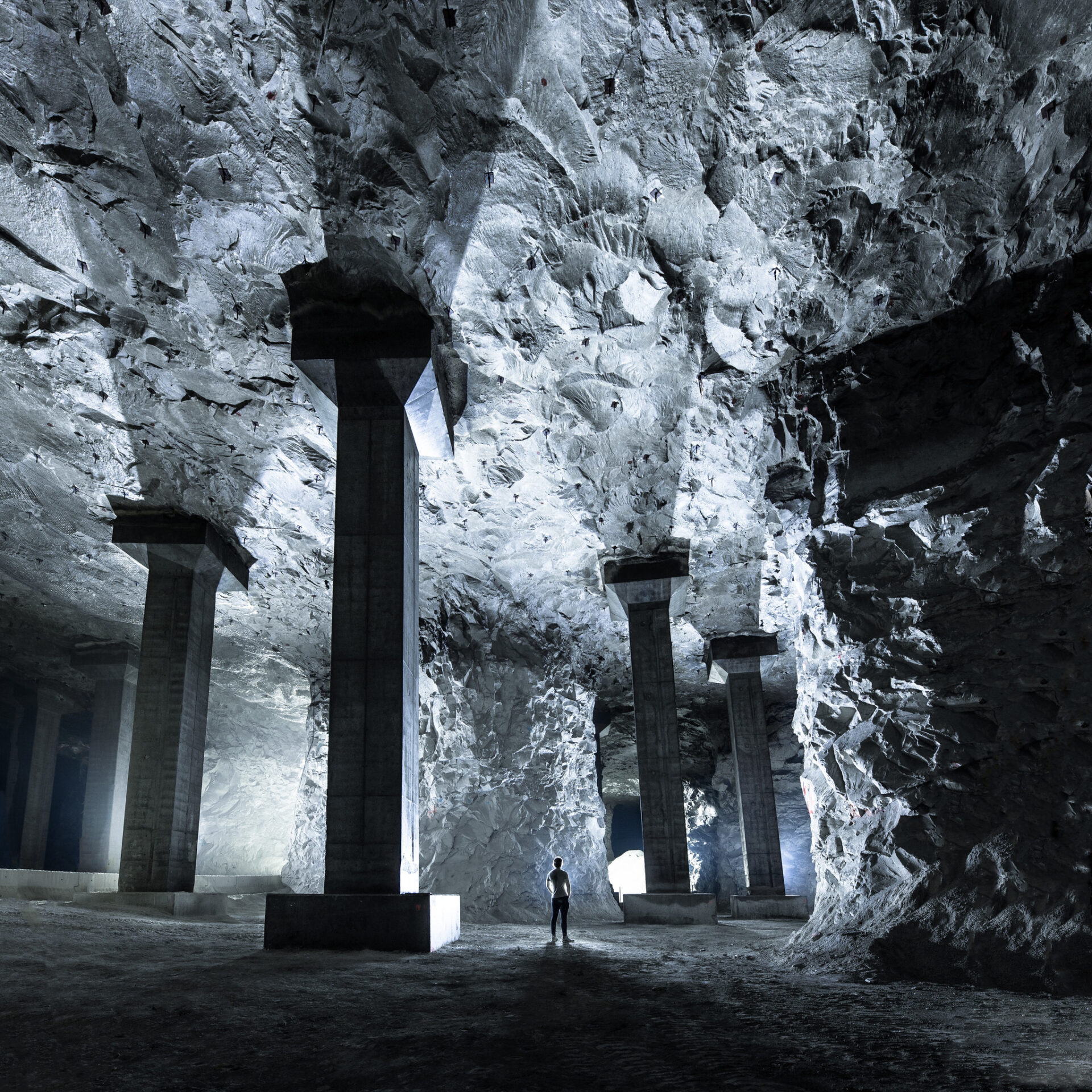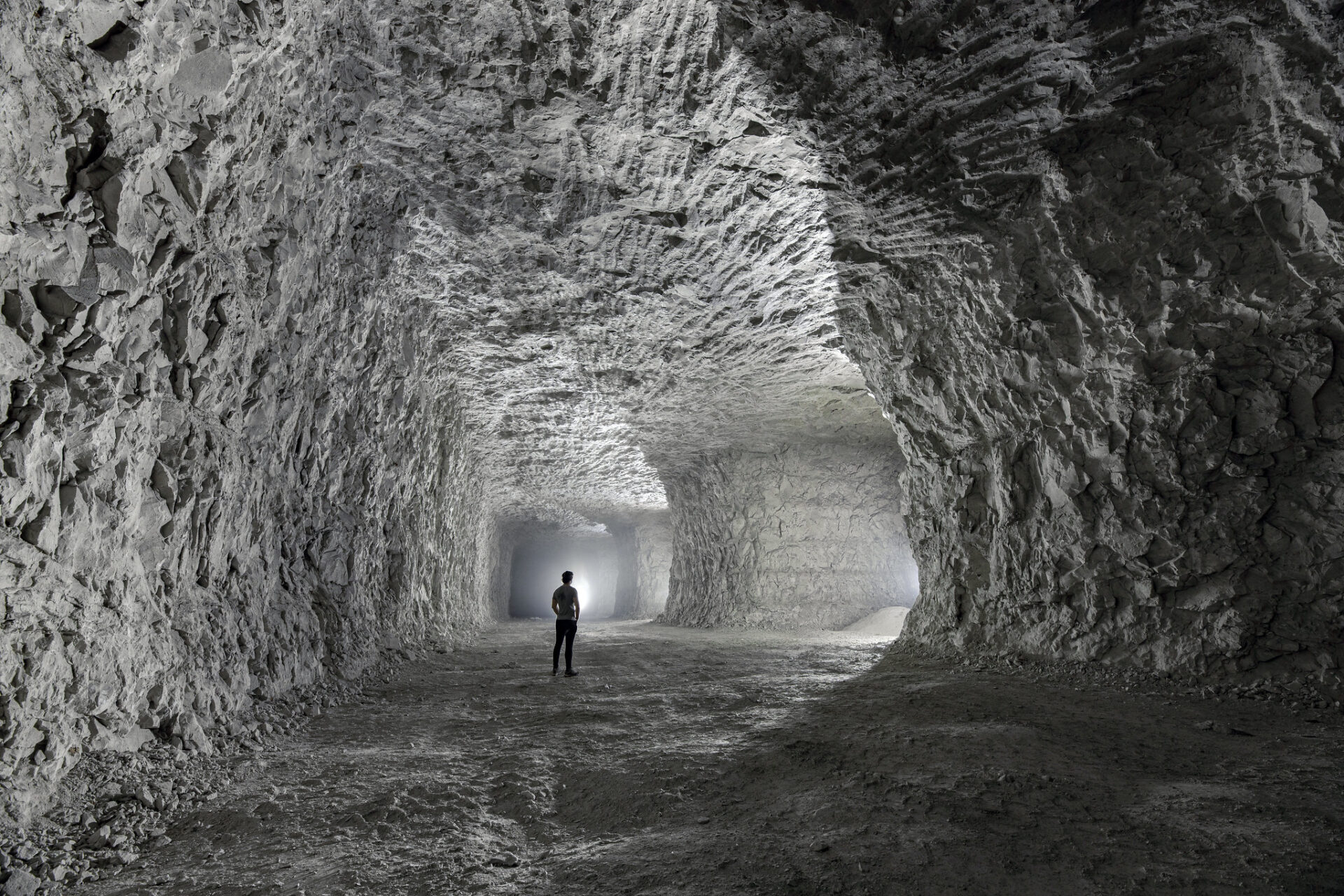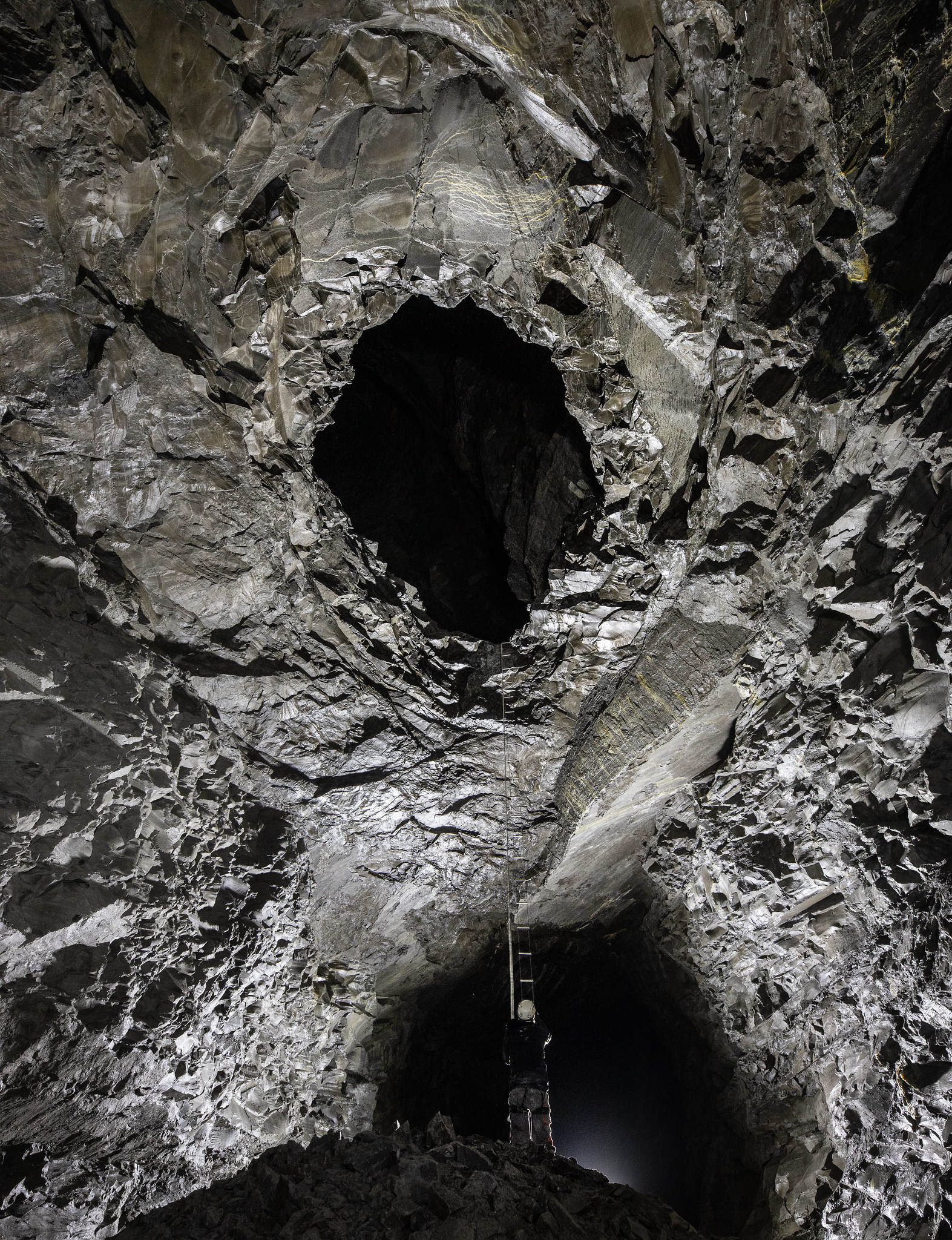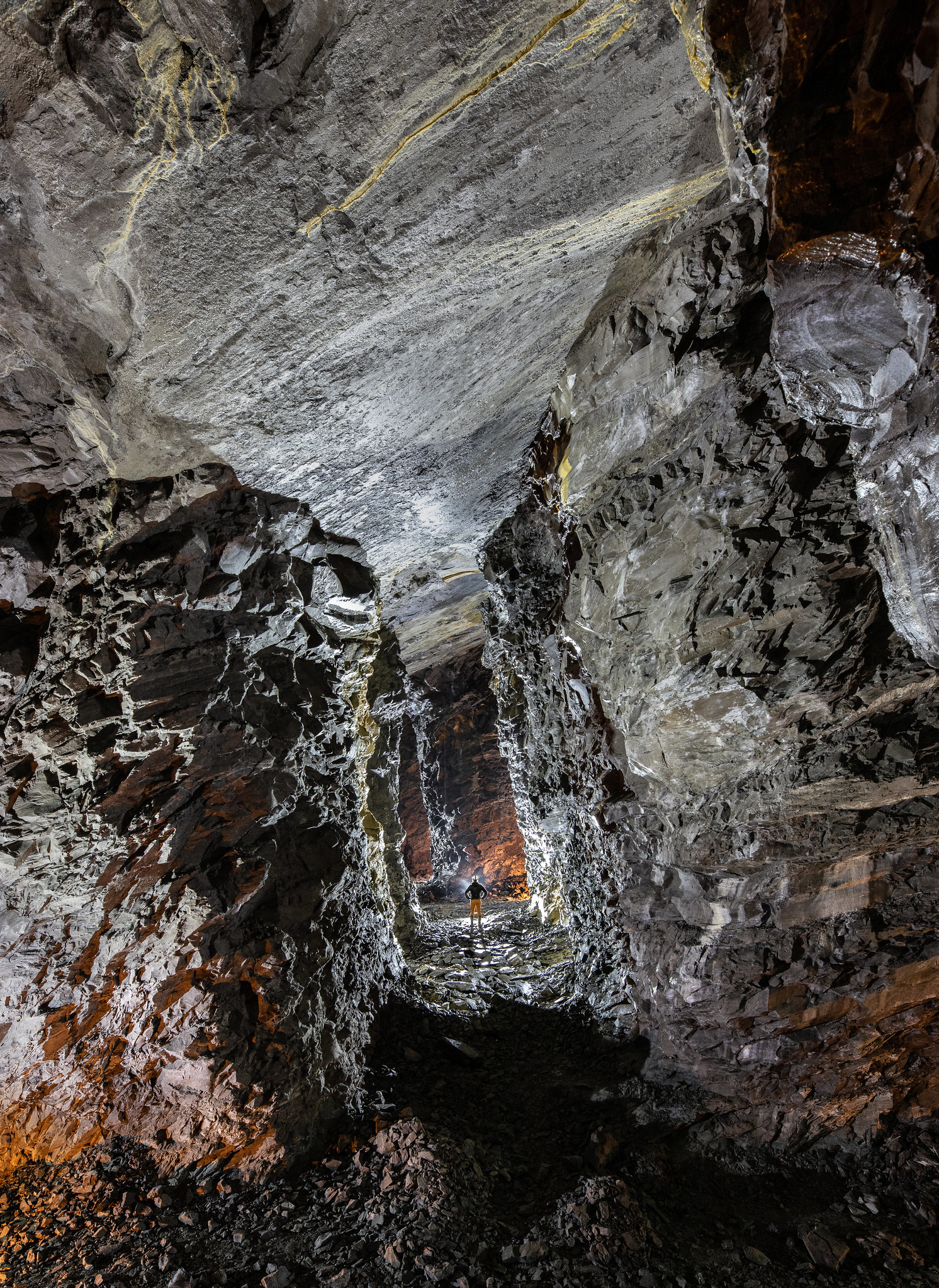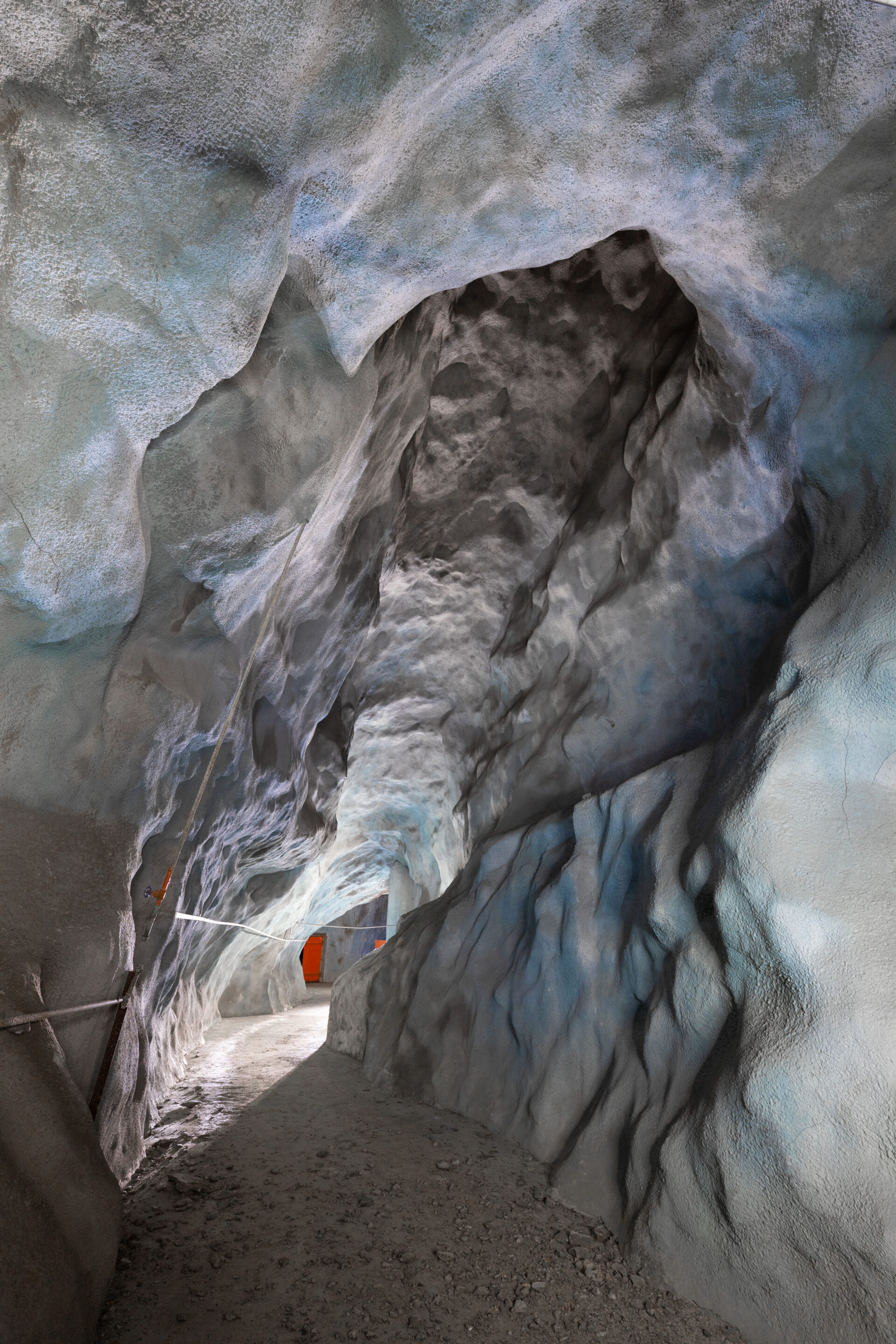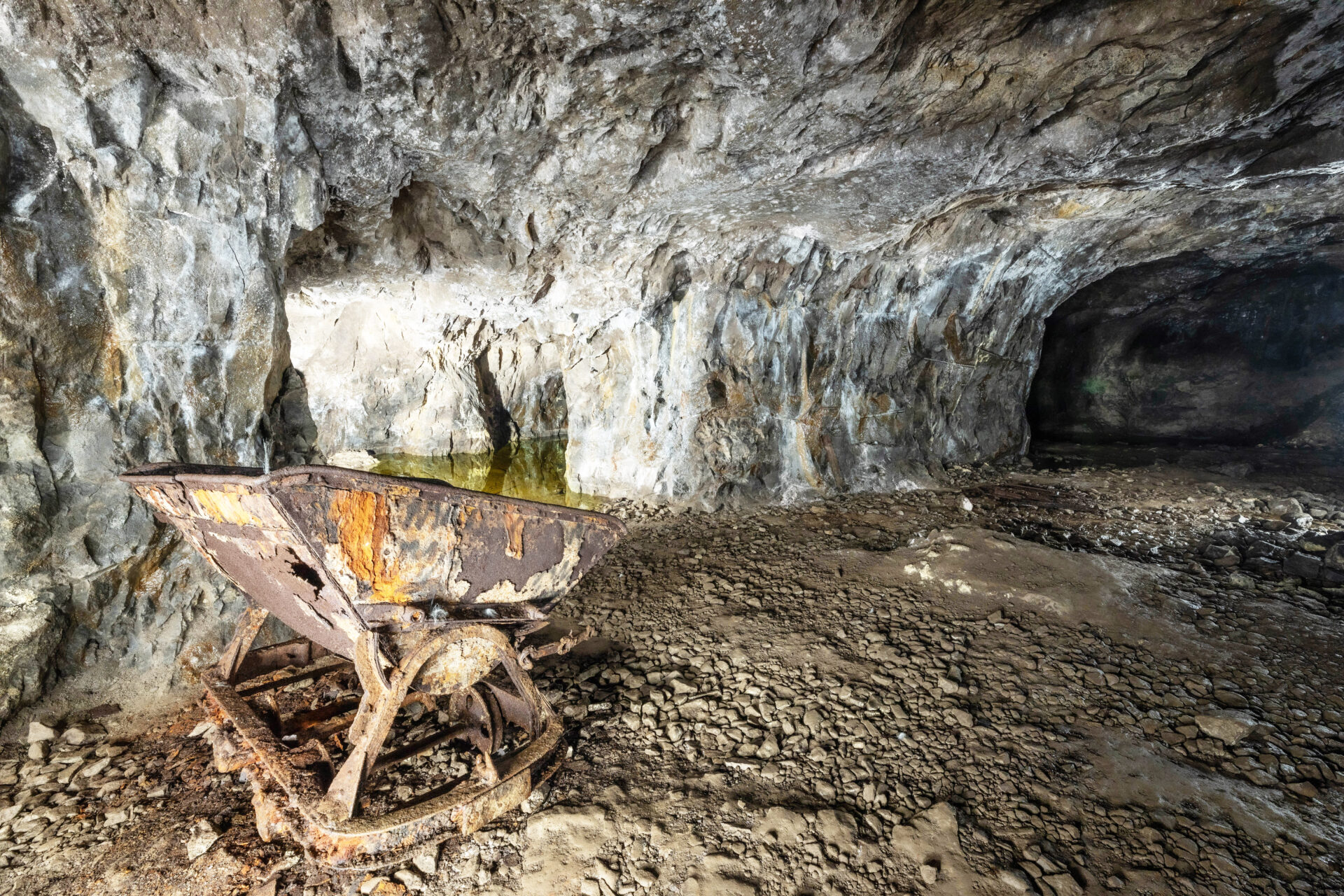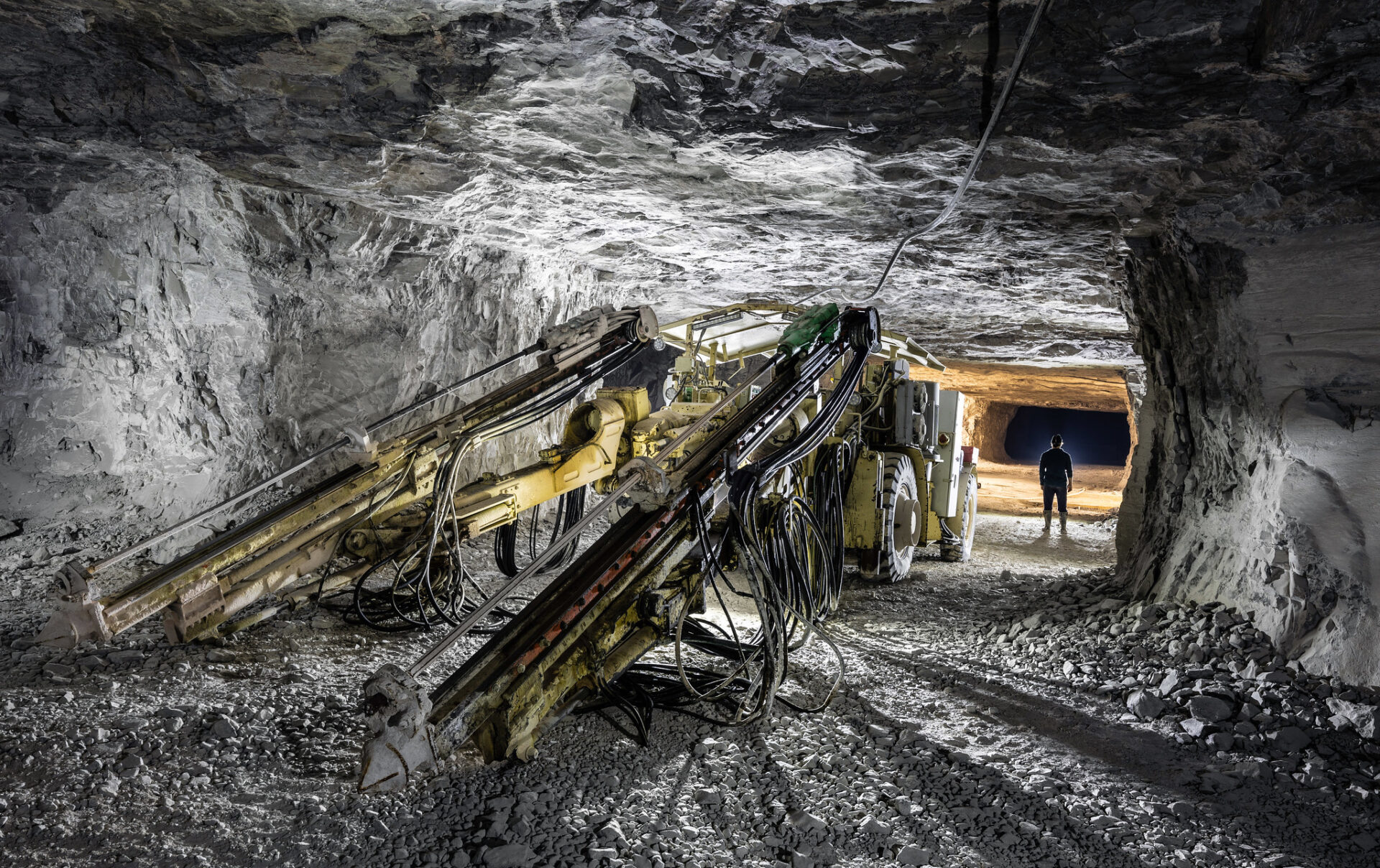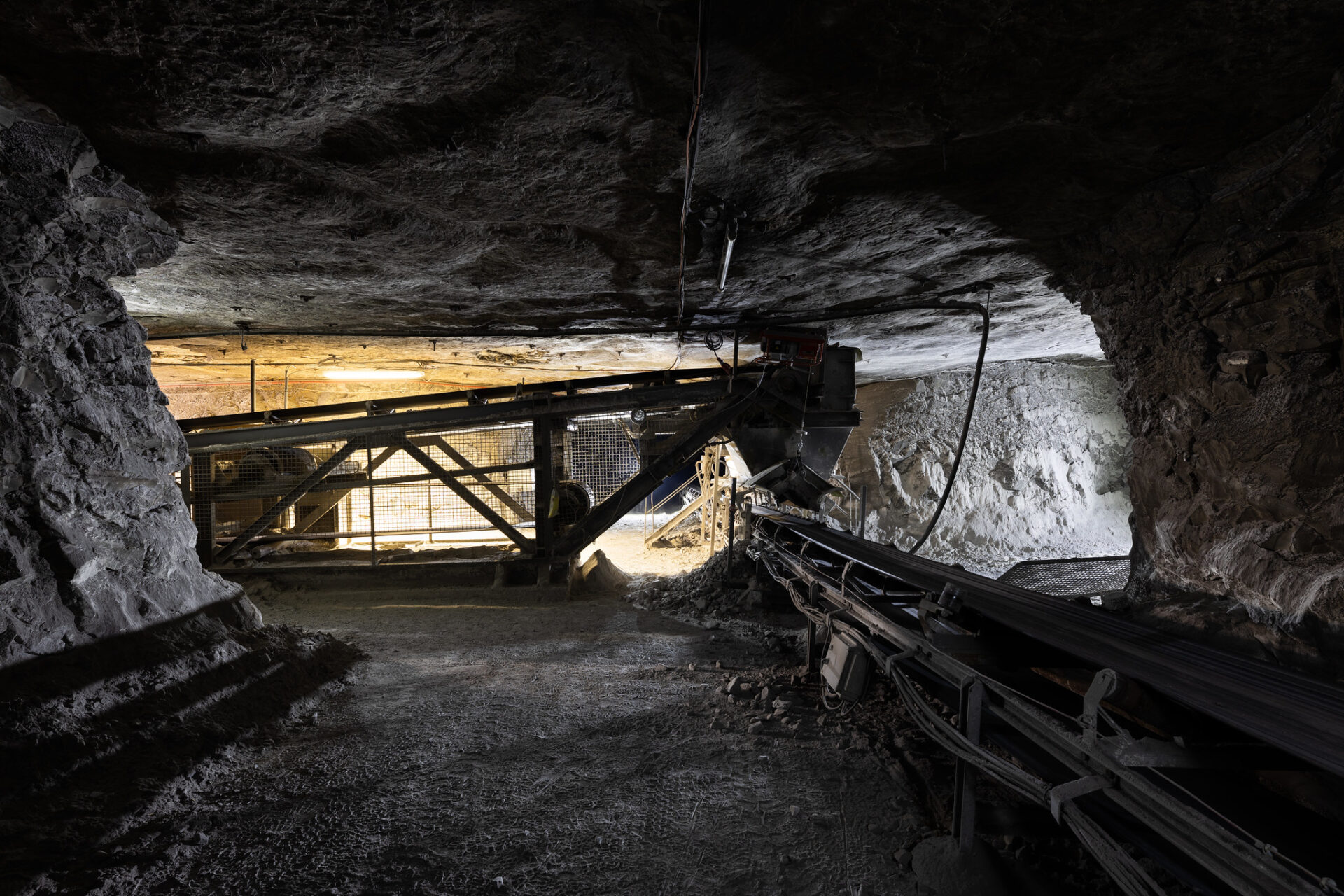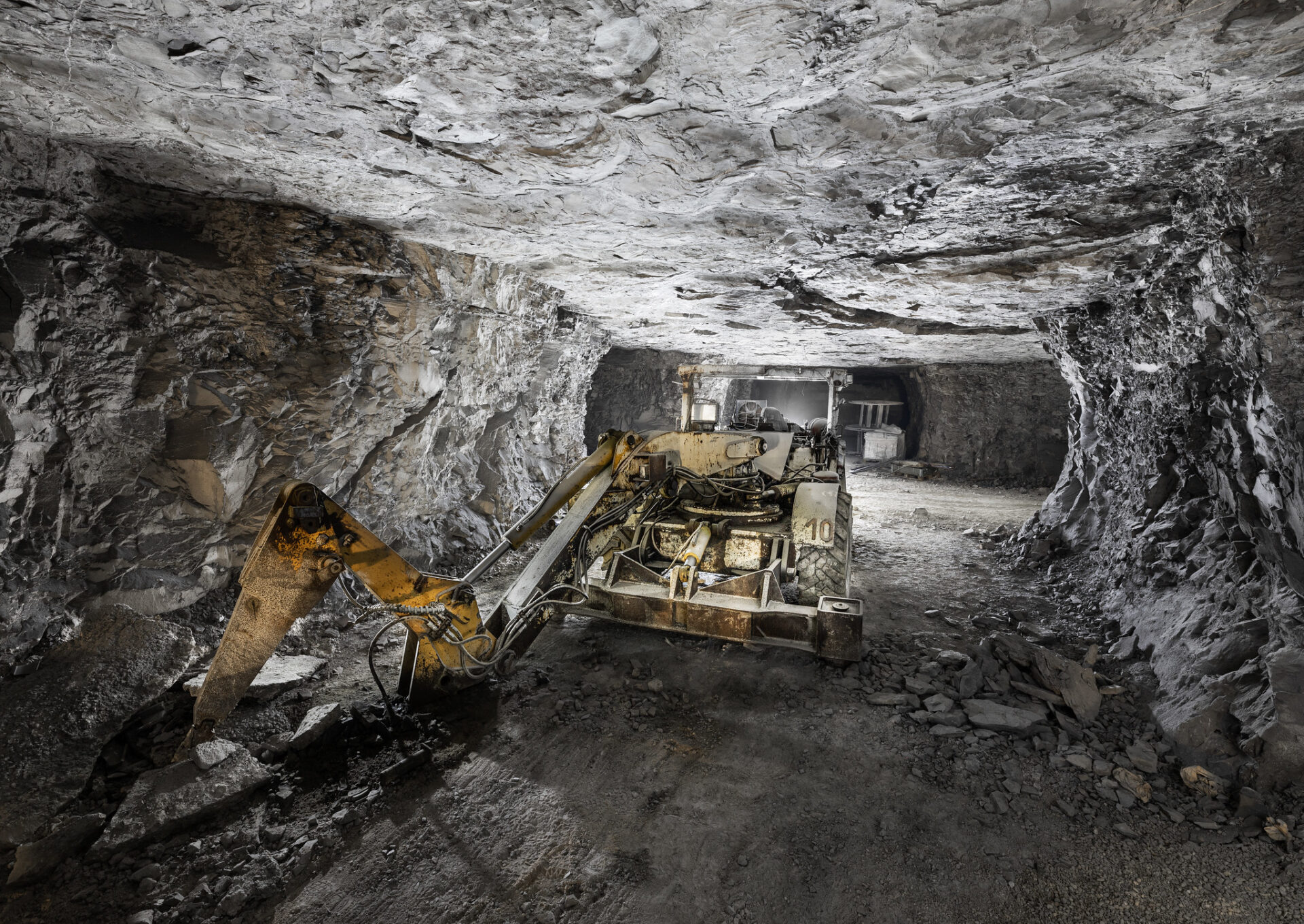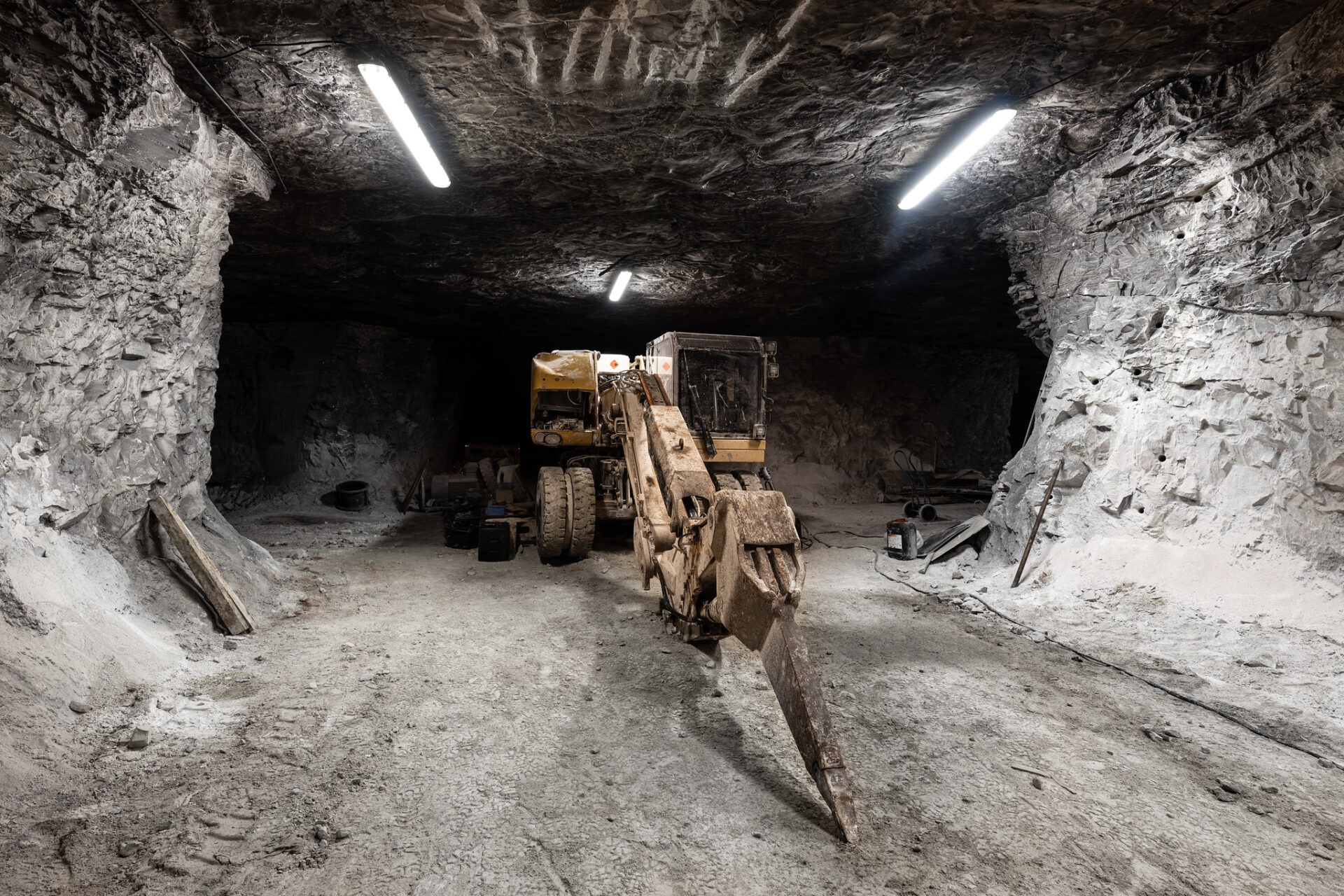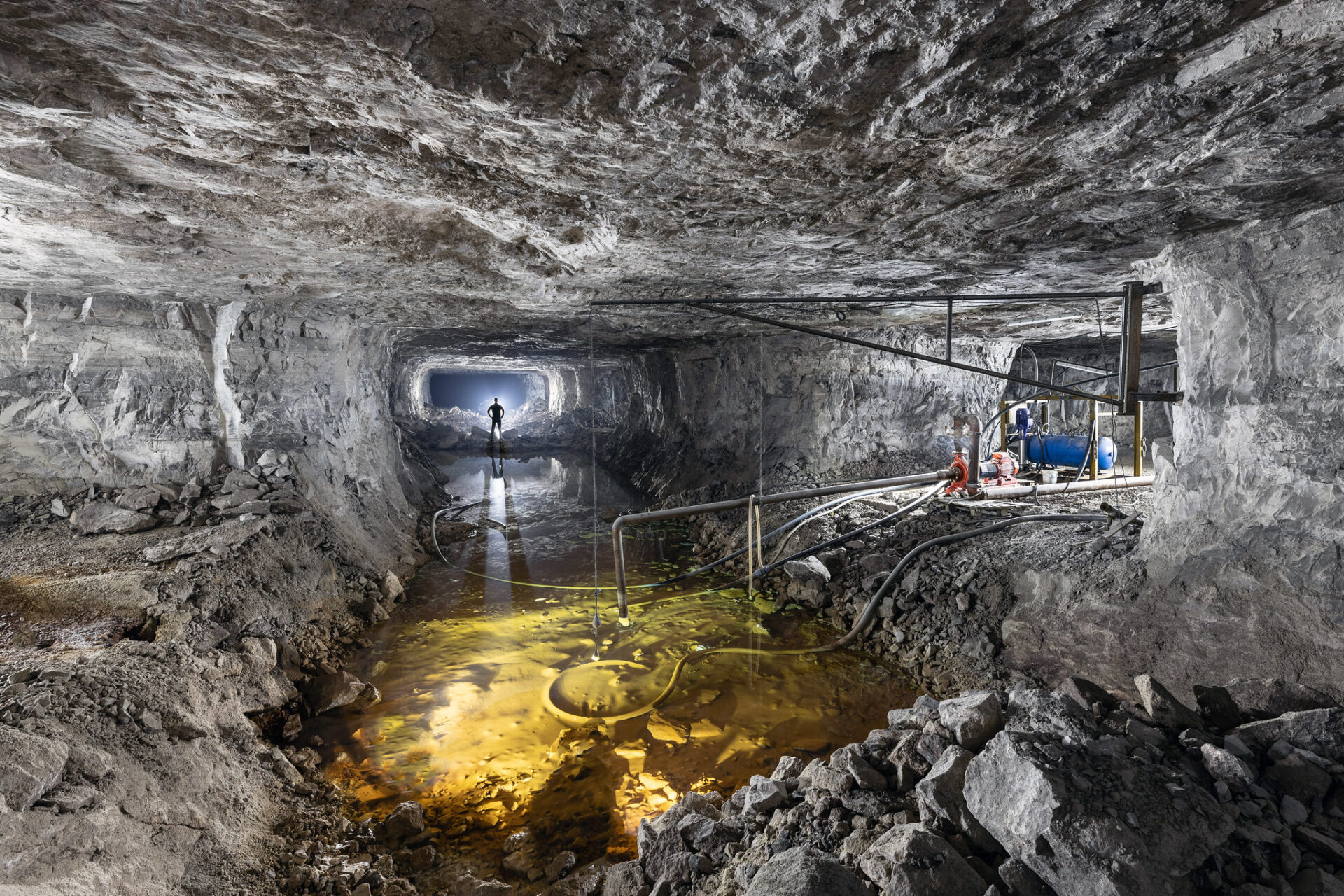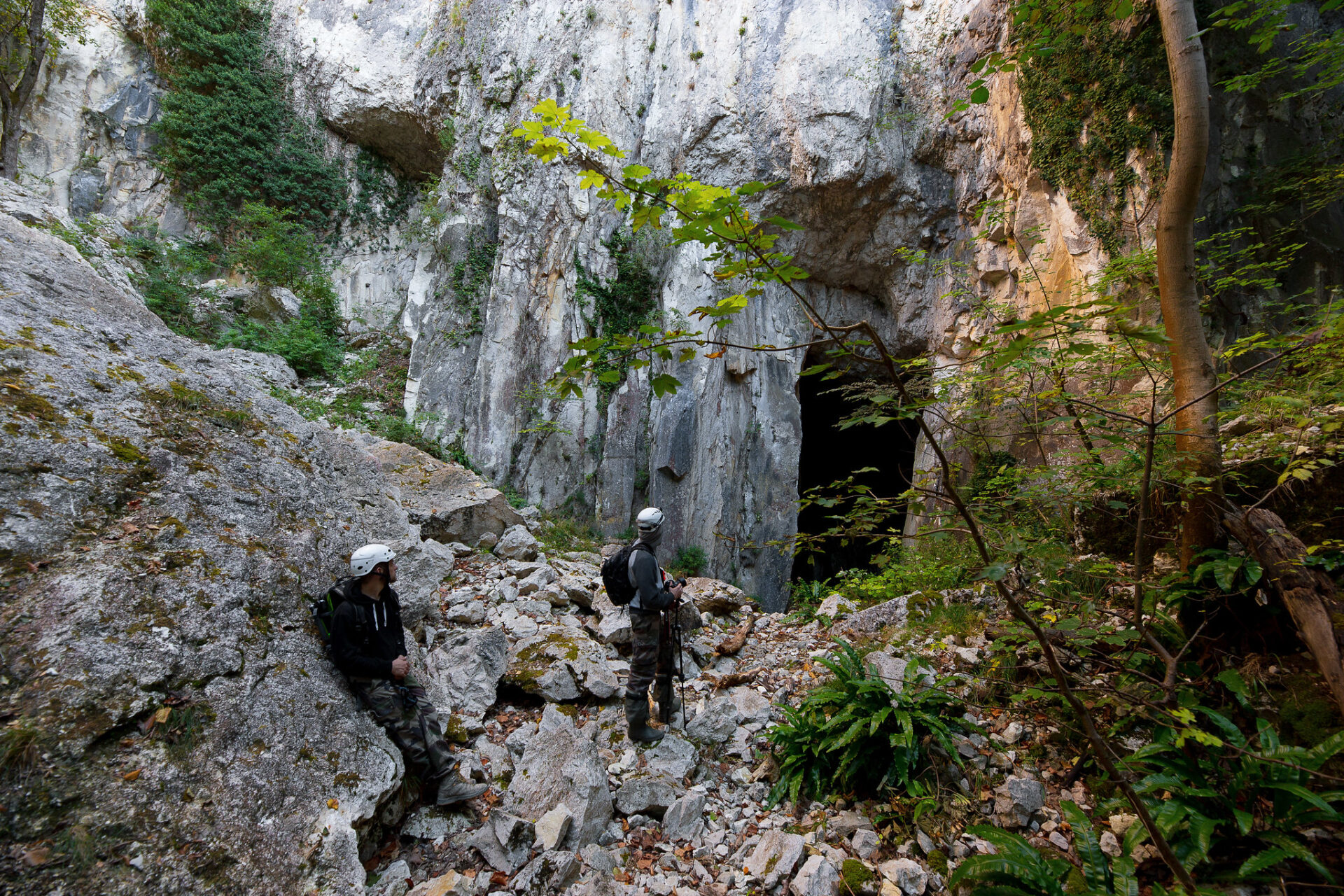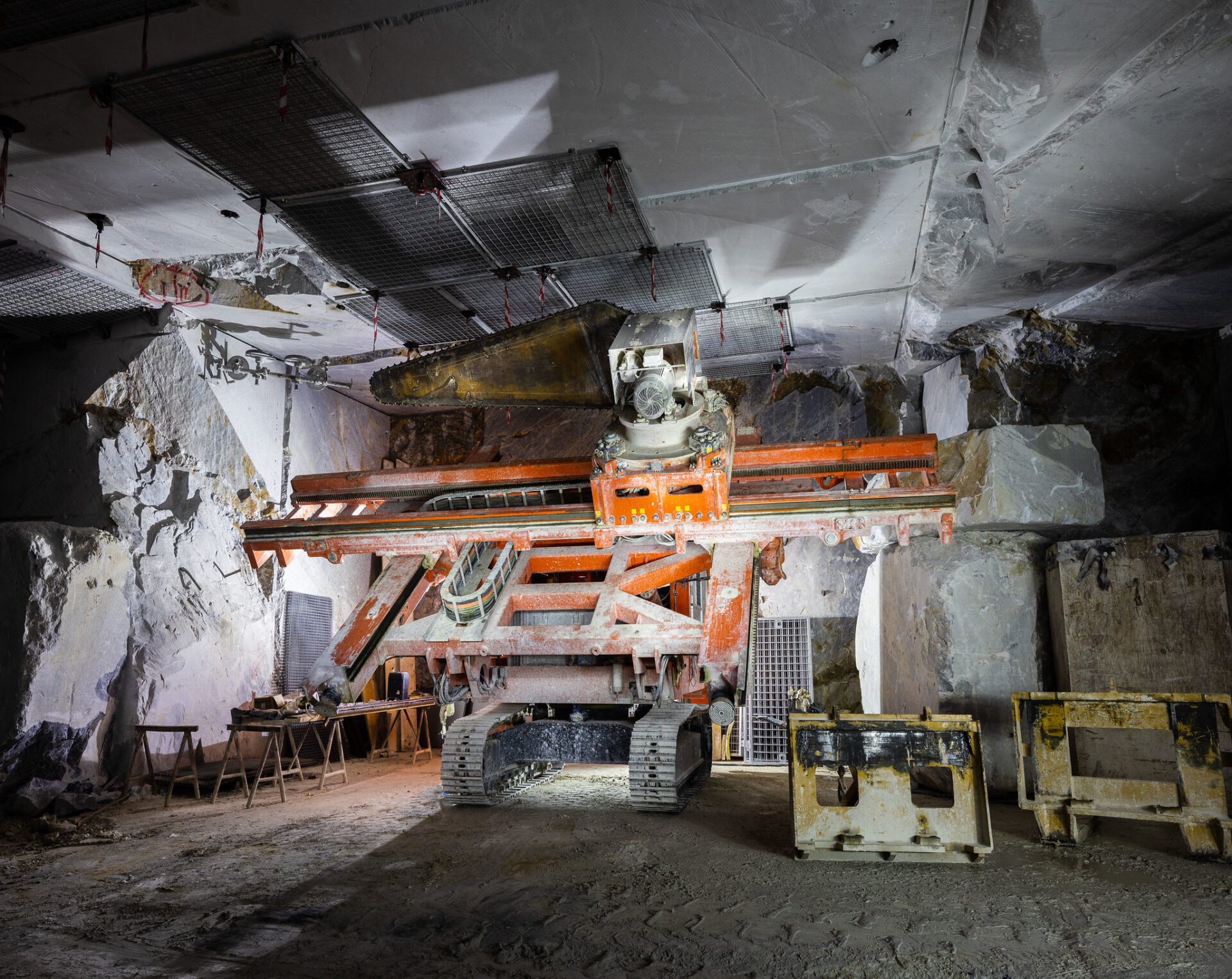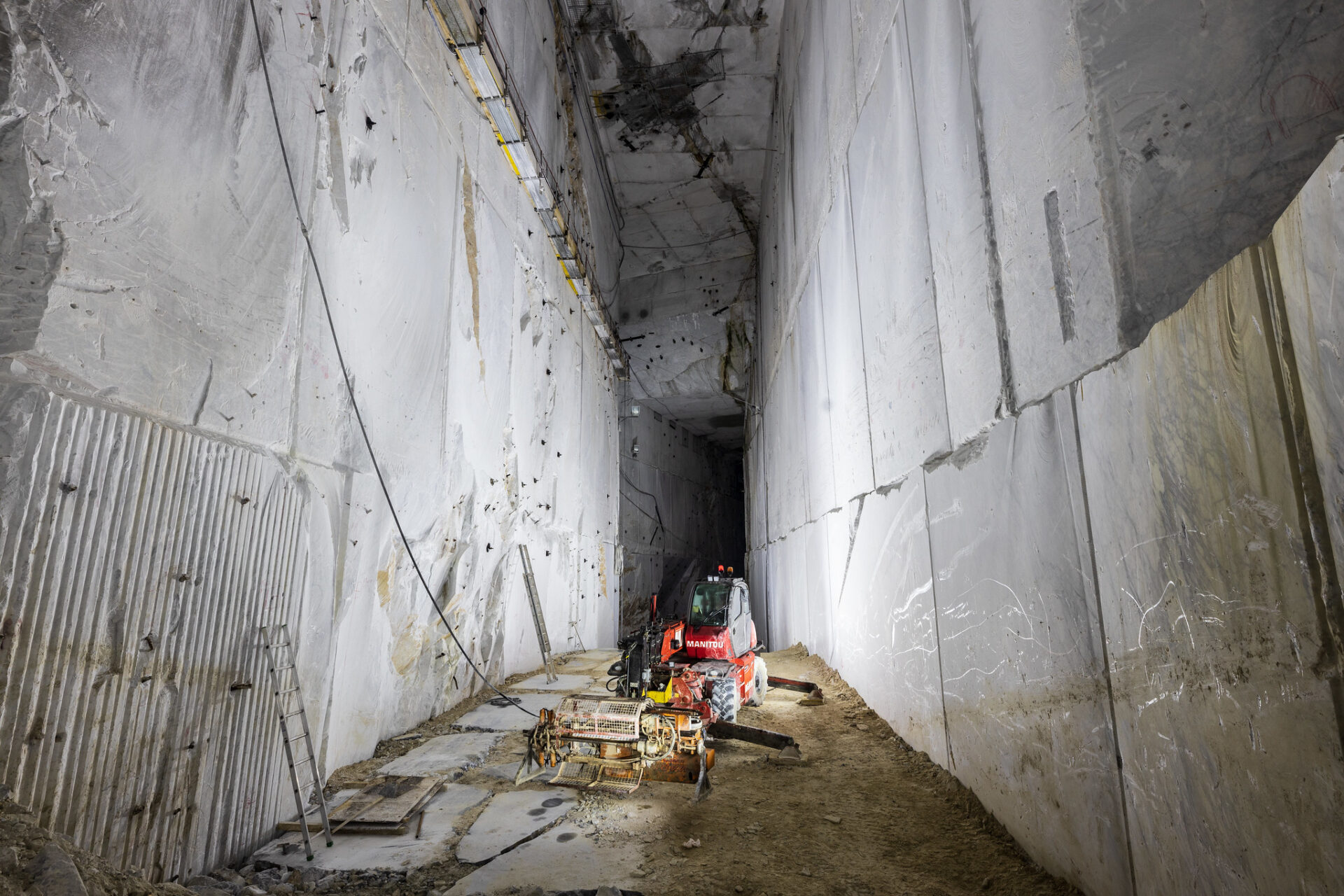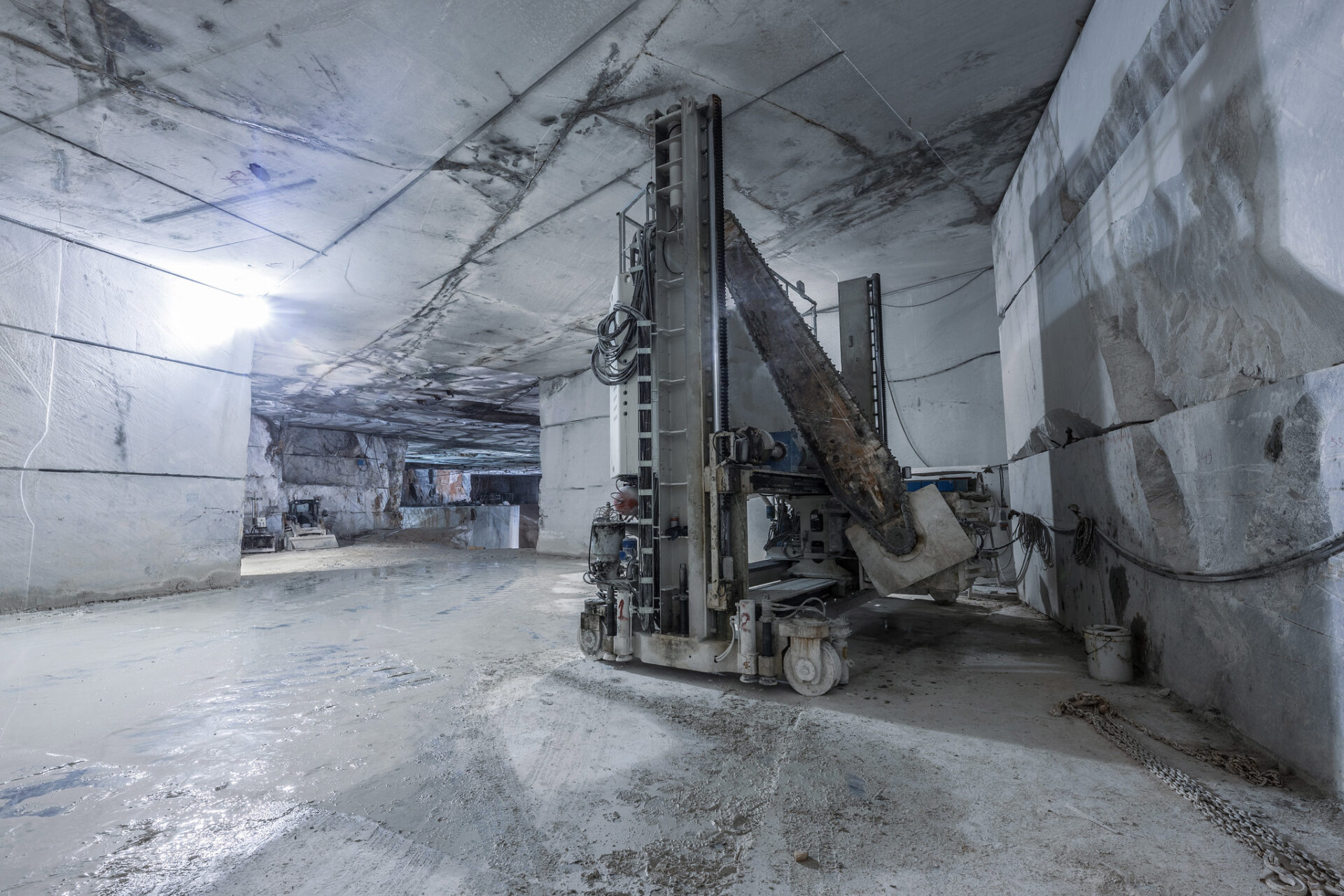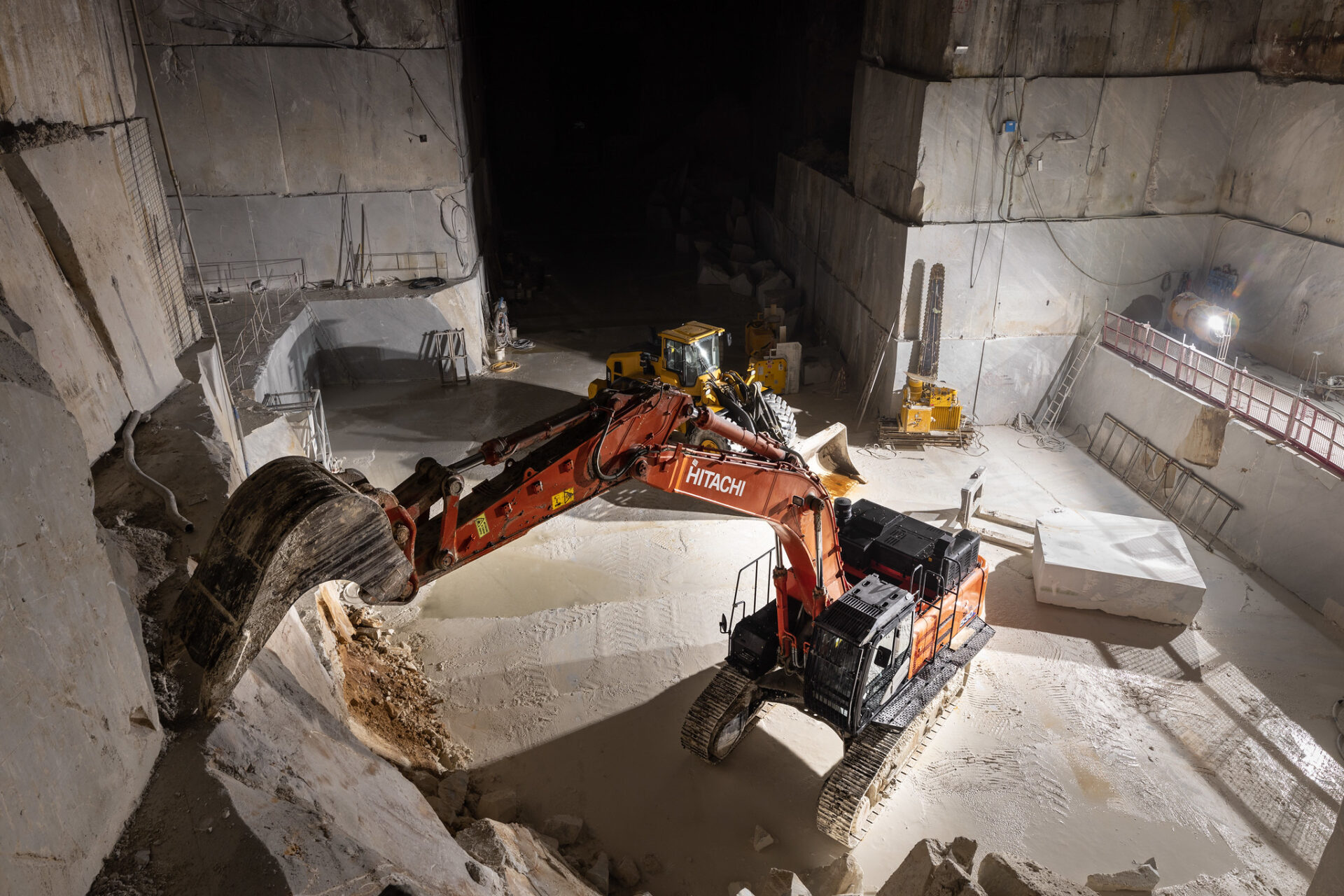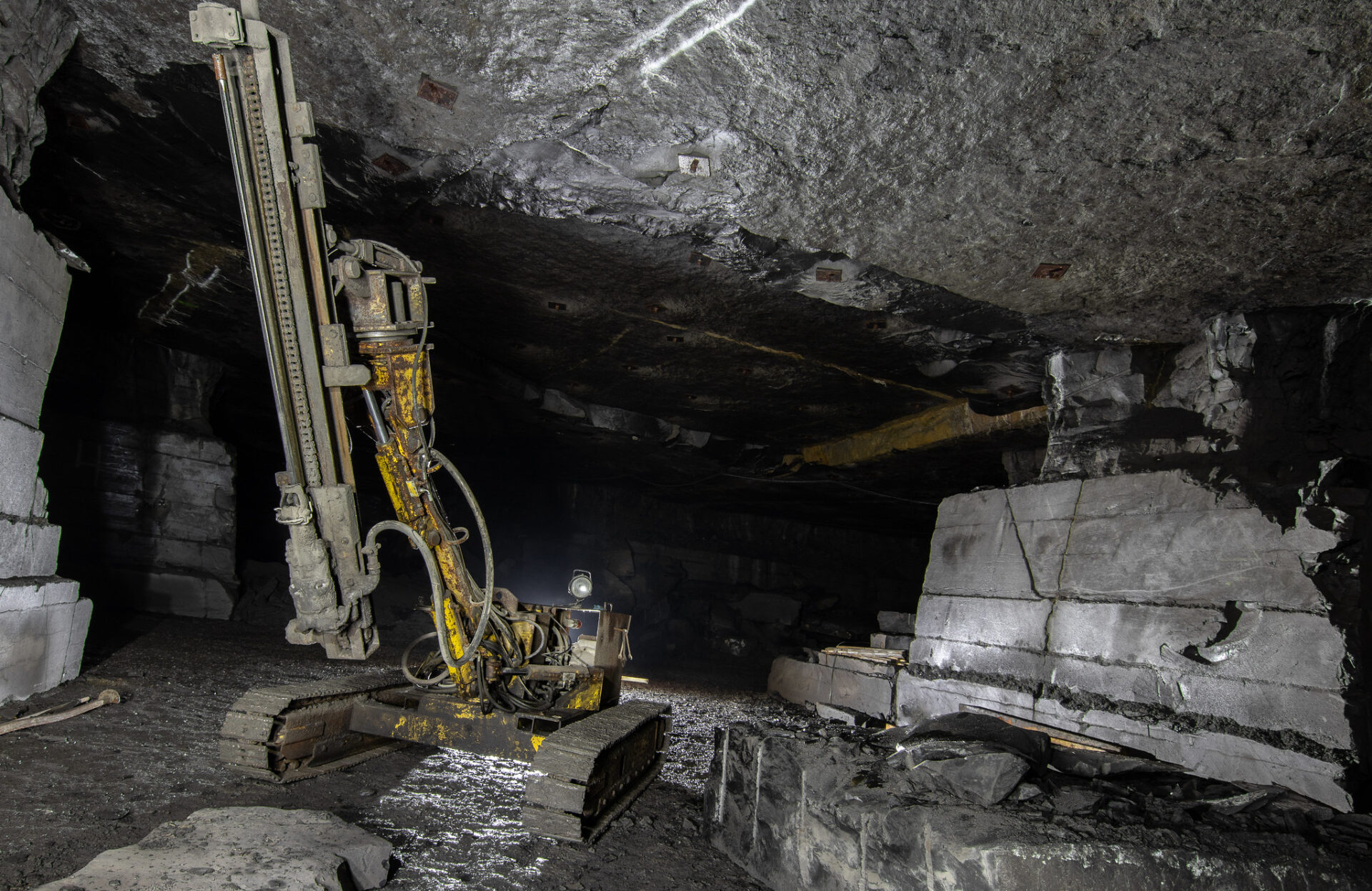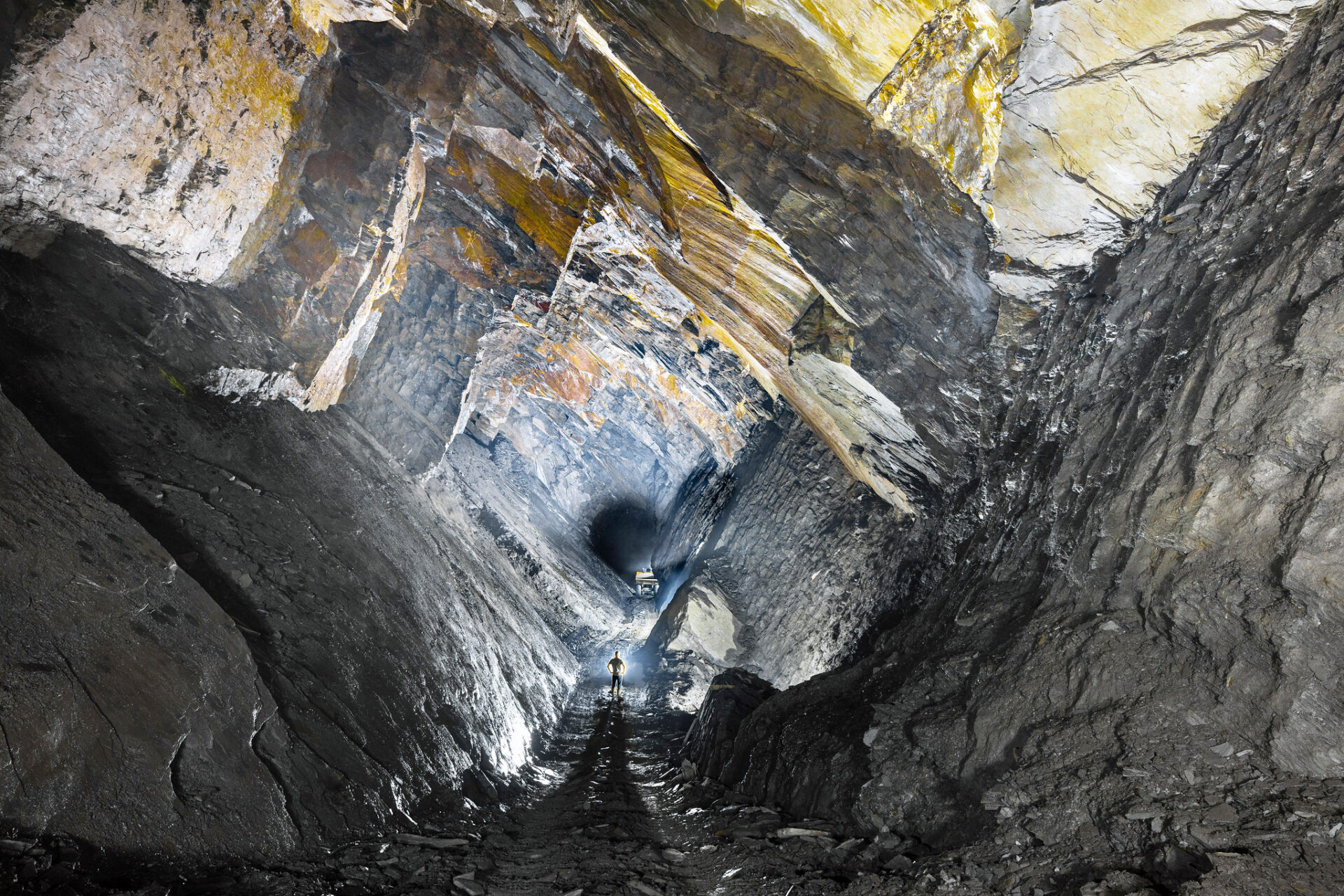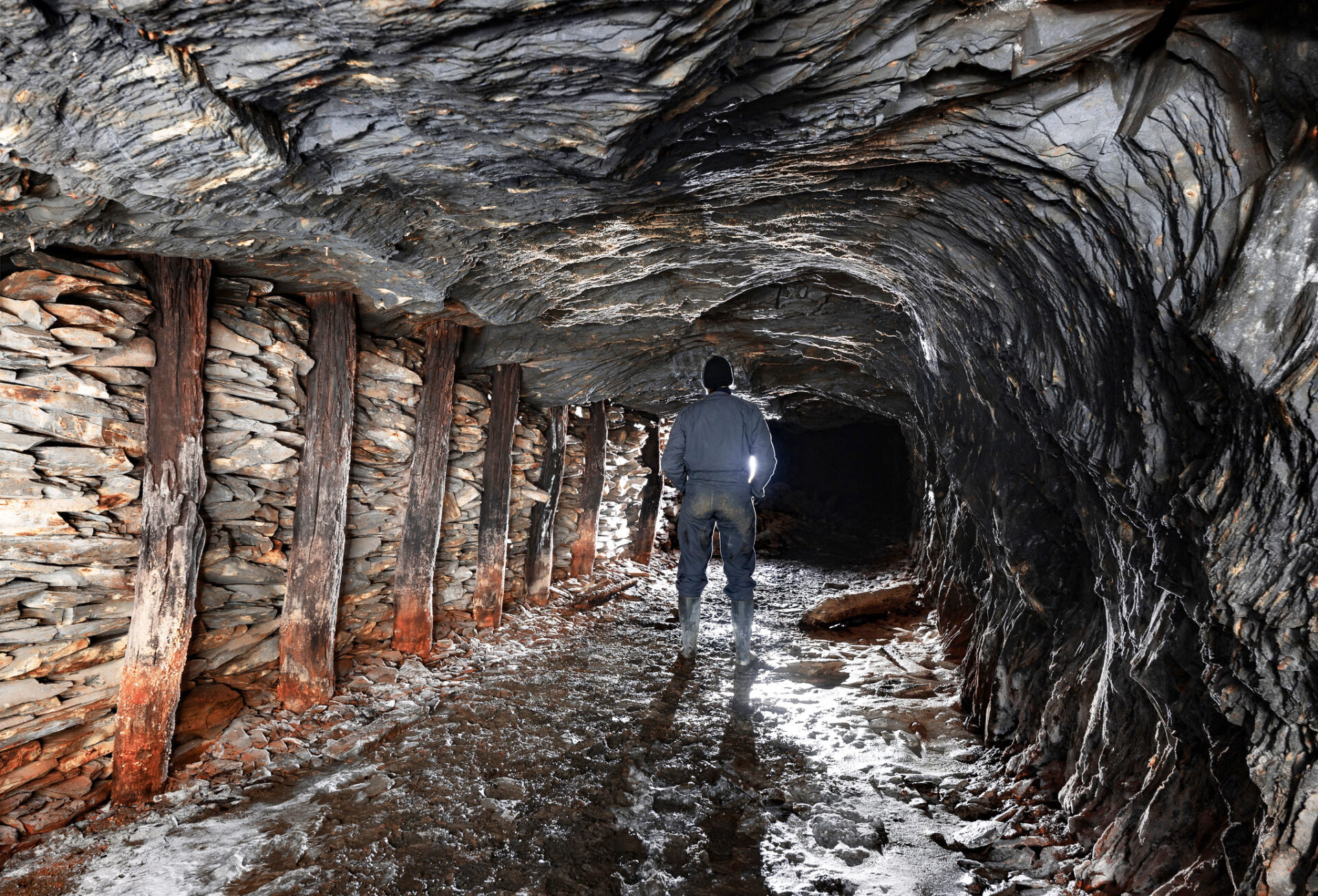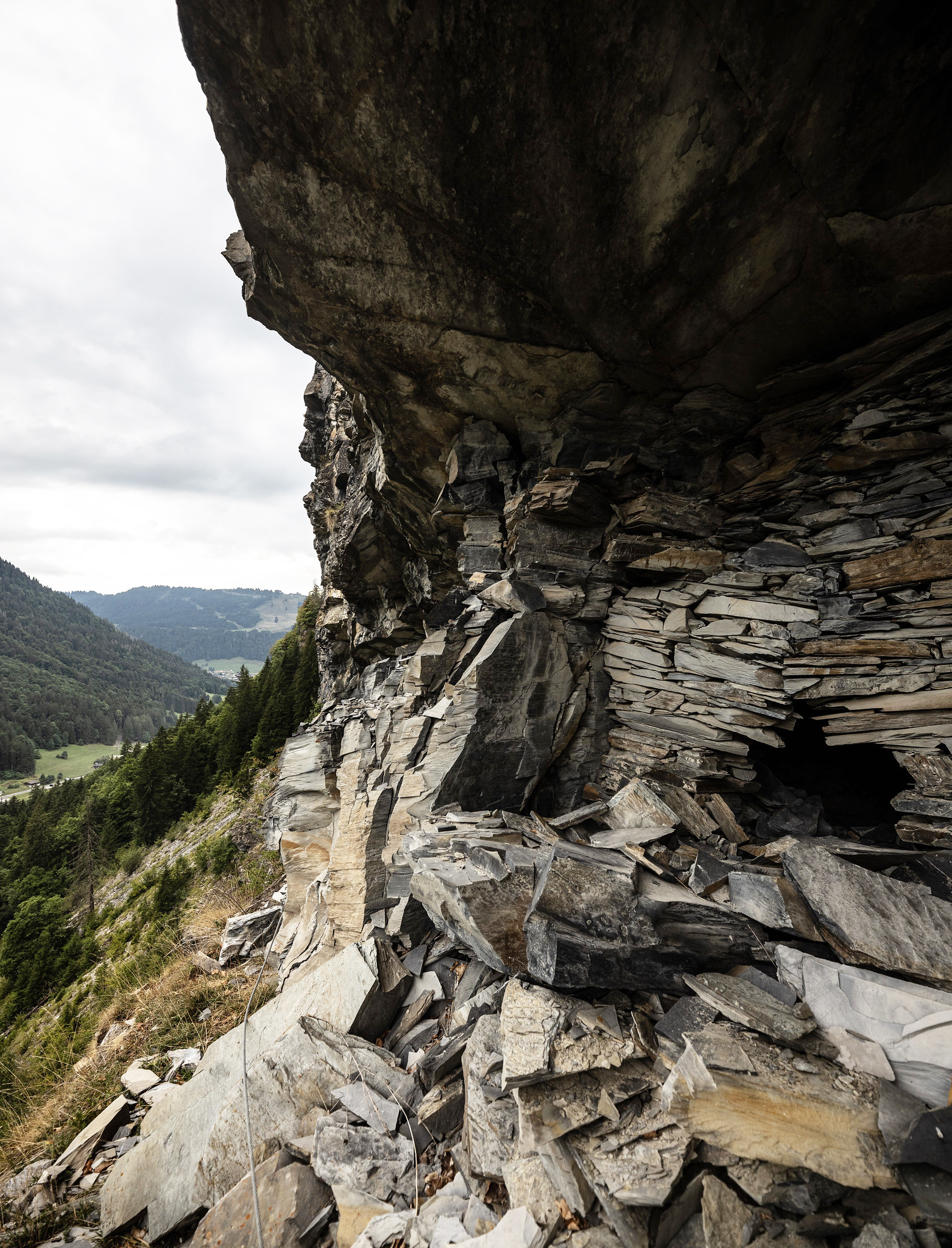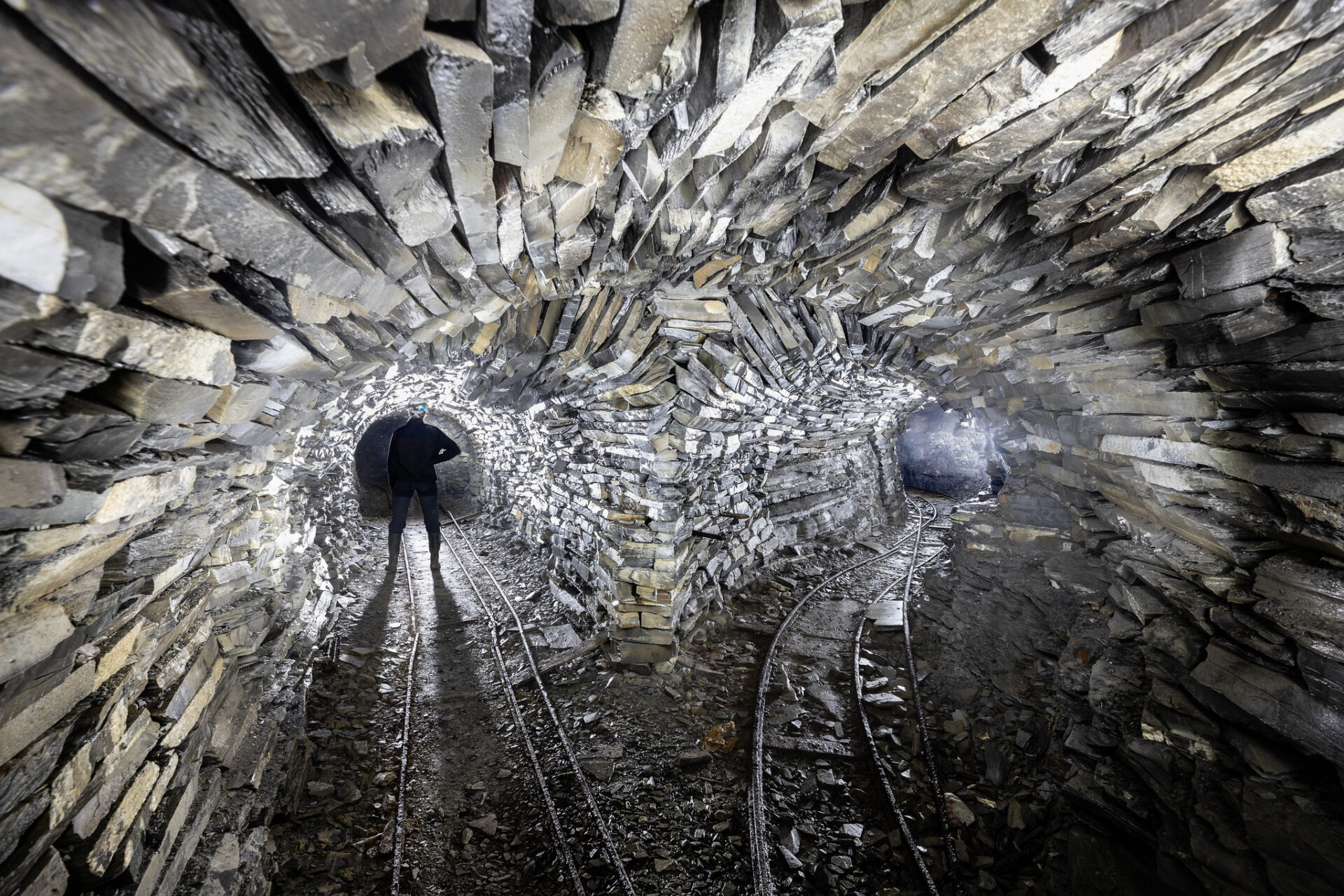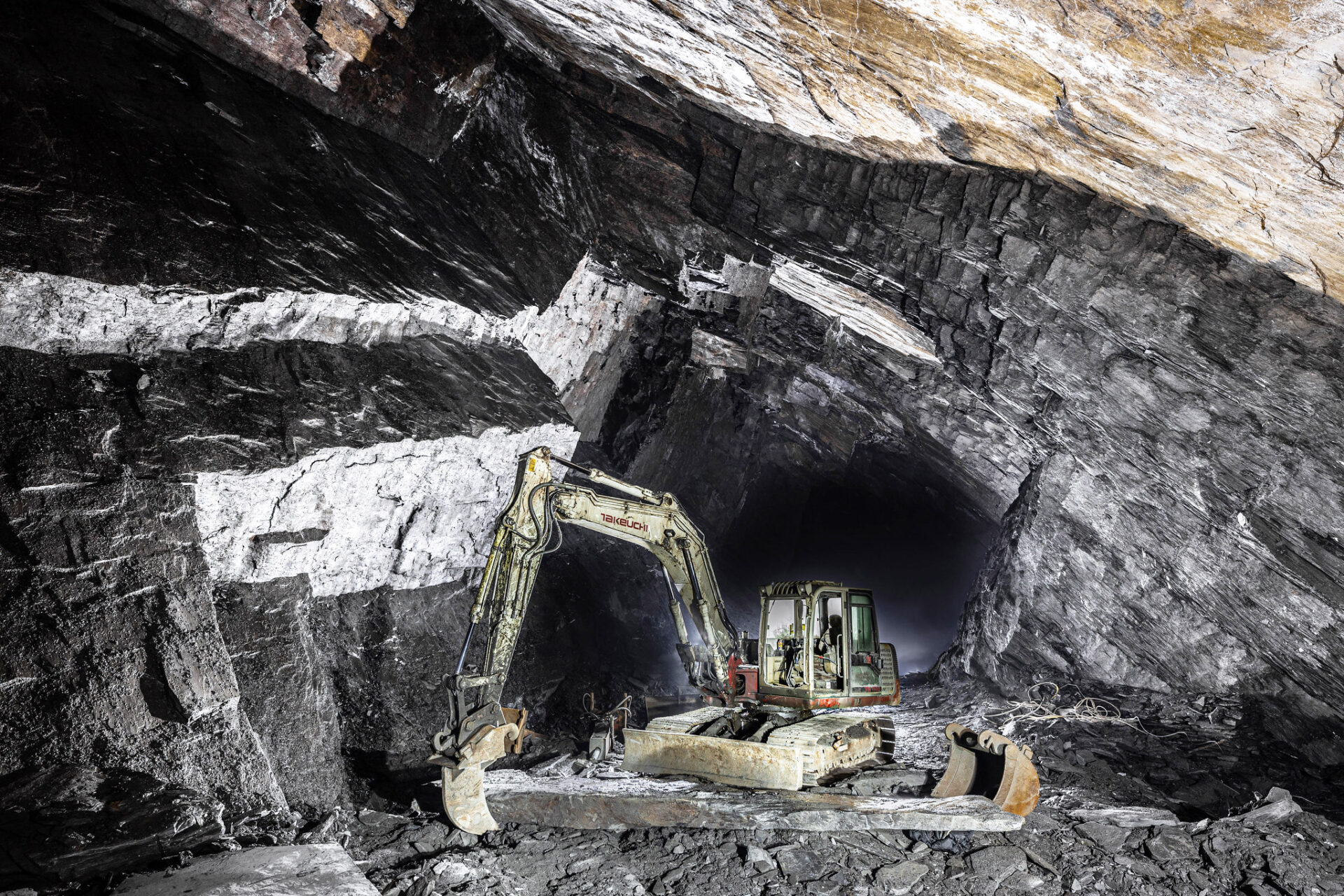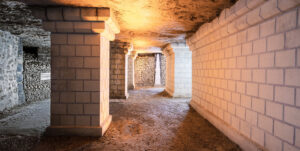The word “quarry” comes from the Latin quadrus which is a shortening of quadrus lapis, which term means “square stone”, in other words “cut stone”. Unlike mines where so-called strategic or precious materials of the carboniferous or metallic types are extracted, underground quarries are exploited for their mineral resources mainly for construction.
Sedimentary rocks
Sedimentary rocks come from the accumulation of sediments that are most often deposited in layers or superimposed beds, called strata. They result from the accumulation of various sediments, that is, solid elements (clasts: pieces of rock or mineral fragments, shell debris, etc.).
Limestone
Limestone quarrying is an industrial process aimed at recovering this sedimentary rock rich in calcium carbonate. Quarries, generally located in geologically suitable areas, are exploited using techniques such as drilling, blasting and the use of heavy machinery.
Limestone quarries are frequently reinvested after their exploitation. For example, they can be used as a cellar, brewery, shelter or even cantonments for combatants.
Gypsum
Gypsum is a rock formed by the evaporation of water in marine or lacustrine (salt lake) environments. When the water evaporates, dissolved minerals, including calcium sulfate, precipitate and are deposited as gypsum. Gypsum is used in the manufacture of plaster and as an additive to clinker to retard the setting of cement. It is used in agriculture as a fertilizer providing calcium and sulfur.
Chalk
Chalk formation results from the precipitation of microscopic shells of marine organisms, mainly coccolithophores. Being rich in calcium carbonate, chalk is used as a soil amendment to neutralize the acidity of the soil and improve its structure. Mixed with clay, chalk is used in the manufacture of lime and cement. Crushed and purified, it provides Blanc de Meudon which is used in the composition of paints and mastics, cleaning products and cosmetics.
Sand
Sand is essentially composed of silica particles resulting from the mechanical erosion of pre-existing rocks, such as granite, quartz, limestone and sandstone. Under the action of wind, water, waves and glaciers, as well as the action of extreme temperatures, the rocks fragment into smaller particles and accumulate. Sand is widely used in construction for the manufacture of concrete, mortar and asphalt, as well as in the foundry industry for the production of cast metal parts. In addition, it is an essential component in the manufacture of glass and is used as a filter media to purify water and liquids.
Ocher
Ochre is formed by the chemical weathering of iron-containing minerals in rocks. It is widely used as a natural pigment in painting, dyeing and coloring materials, as well as in the manufacture of artificial pigments and building materials.
Cement
Cement is mainly produced by calcining and grinding a mixture of limestone (80%) and clay (20%) at high temperature or, more rarely, from cement stone deposits having these characteristics. It is widely used as a binder in construction for the manufacture of concrete, mortar and other building materials, as well as in various industrial applications such as the production of refractory materials and precast concrete products.
Asphalt / bitumen quarry
According to current legislation, all operations that have extracted asphalt or bitumen are located in limestone formations, which would normally classify them as quarries. However, some of these operations have obtained specific concessions under the mining regime. Today, both terms are therefore used.
Asphalt, also known as bitumen, is a natural material that varies from very viscous to solid. When fresh, it is black in color, which becomes brown when altered. It results from the transformation of buried organic matter and is closely associated with the formation of oil. It is mainly found impregnated in limestone, sandstone or shale formations (such as limestone and oil shale), where it can be extracted.
If we observe a sample of asphaltic rock under a microscope, we notice that each grain is coated with a thin film of pure bitumen, which binds them to the surrounding grains. Thus, asphalt rock is actually a conglomerate of very fine grains, cemented by bitumen. By heating a piece of this rock to a temperature of 80 to 100°C, the bitumen film softens and melts, which causes the asphalt to lose its cohesion. The limestone grains then mechanically separate from each other, and the material disintegrates into dust. If we take this dust while it is still hot, or if we reheat it after cooling, since we compress it to bring its molecules closer together and press them vigorously against each other, they stick together again. Once cooled, the material reconstitutes itself exactly as it was originally, retaining the same consistency and appearance. It is on this remarkable property that the compressed asphalt road industry is based.
Anhydrite
Anhydrite forms by chemical precipitation from saturated calcium sulfate solutions in environments where water evaporates rapidly, such as salt lakes. It can also form by the transformation of gypsum under certain conditions of temperature and pressure. Anhydrite is primarily used in the cement industry to regulate the setting time and improve the properties of cement. It is also used in the chemical industry as a source of calcium sulfate for the production of sulfuric acid and other chemicals.
Metamorphic rocks
A metamorphic rock is a rock formed from the transformation of pre-existing rocks (such as sedimentary or igneous rocks) under the effect of heat, pressure and sometimes chemical fluids.
Marble
Marble is formed by the metamorphism of limestone or dolomite under the effect of heat and pressure. This process transforms the original rock into a crystalline rock with a very smooth texture and distinctive veins. Marble is widely used as a building material, in sculpture, interior decoration and other aesthetic applications.
There is also black marble, whose color comes from the process of recrystallization according to local geological conditions, mineral impurities (such as graphite) or organic impurities (organic, plant or animal matter). In Belgium, the term “black marble” is also used to designate limestone rocks that have been polished and used for decorative purposes, even if they do not strictly meet the geological definition of metamorphic marble. Limestone rocks, when sufficiently compact and have a crystalline structure, can be polished to obtain a glossy finish and are often marketed under the name “marble”.
Slate
Slate is a metamorphic rock derived mainly from sedimentary clay. It forms under high pressure and heat, as well as compressive forces, which induce the recrystallization of minerals and the formation of sheets. Slate is widely used in the construction industry for roofing, flooring, facades and decorative elements.


